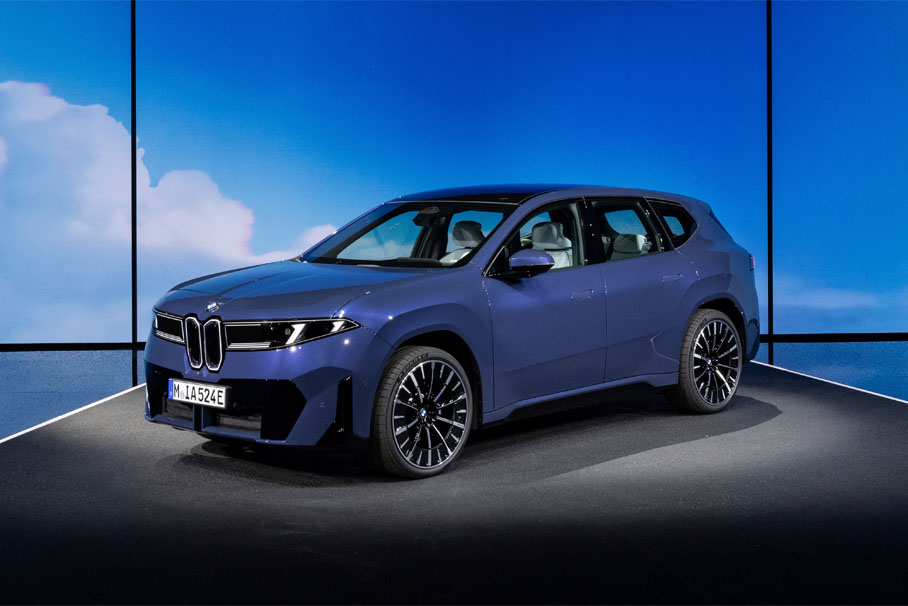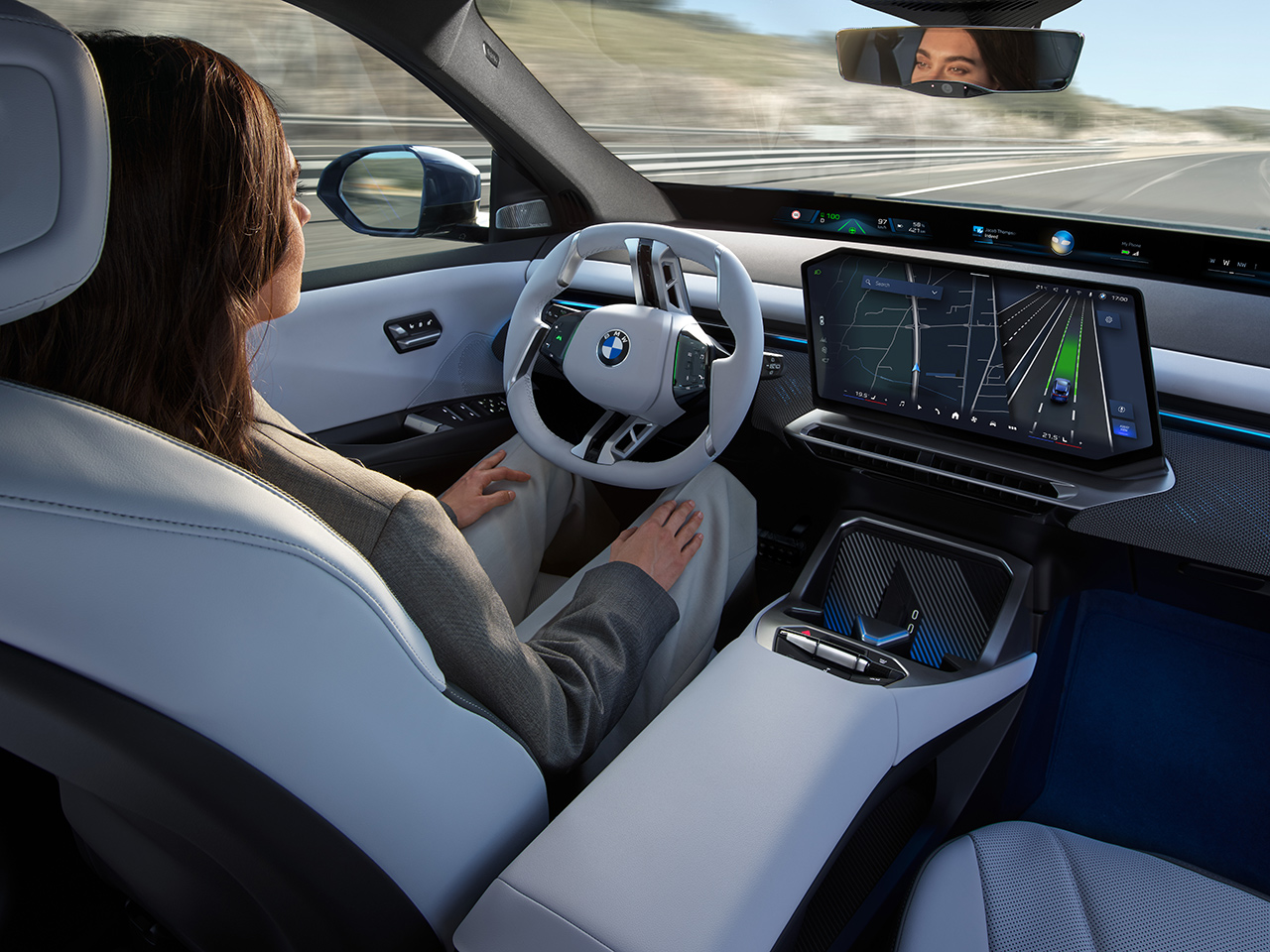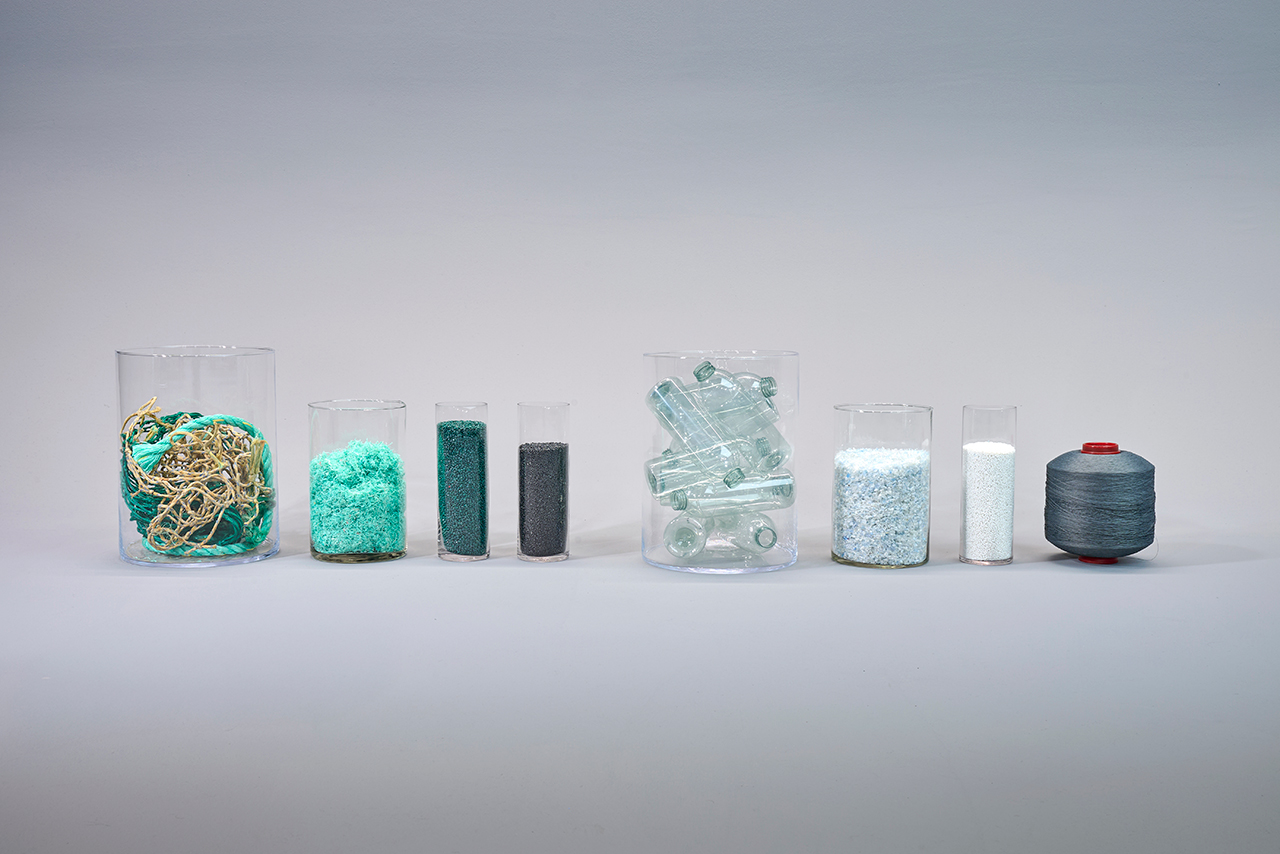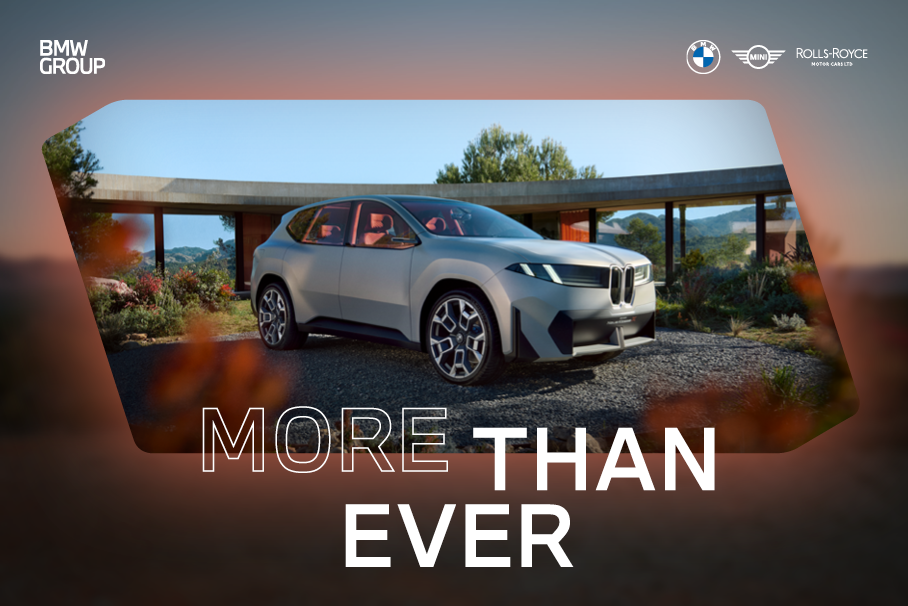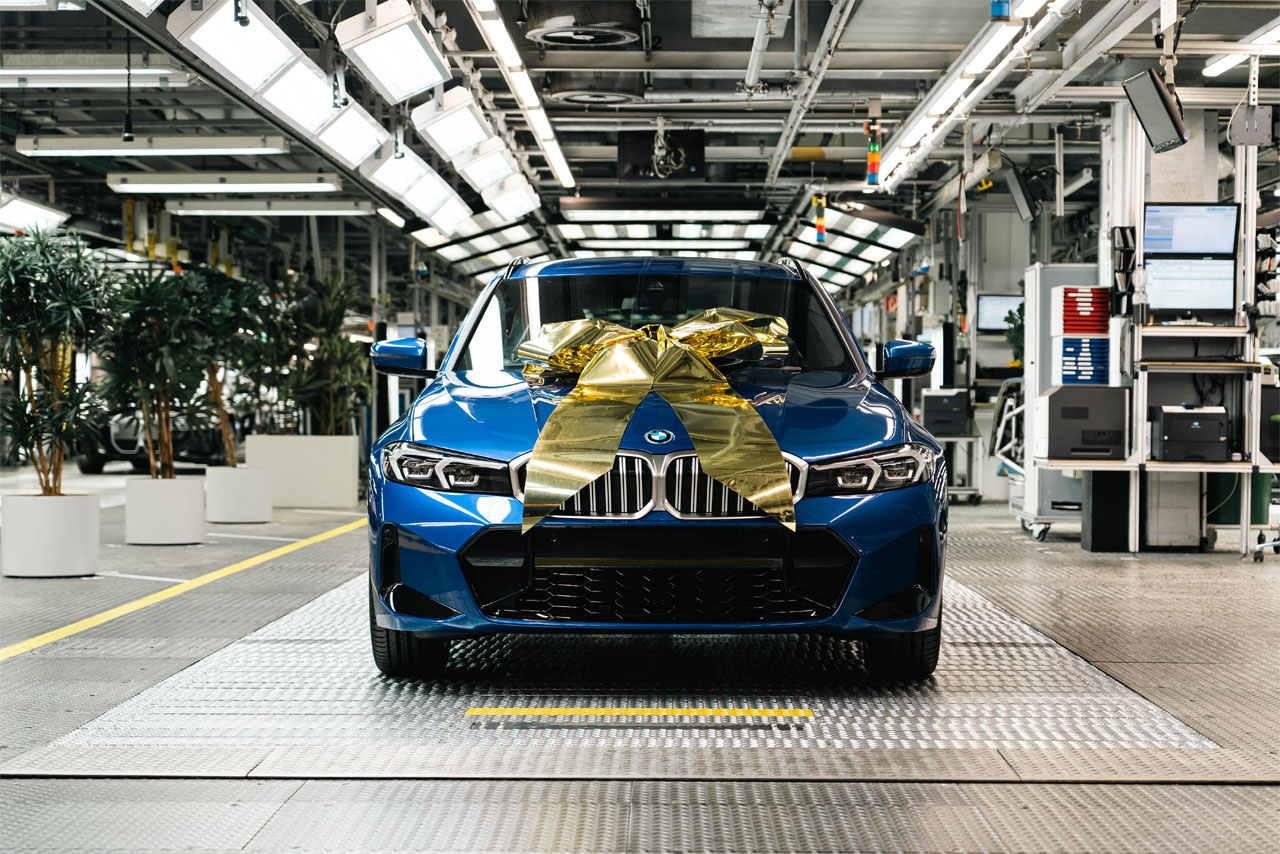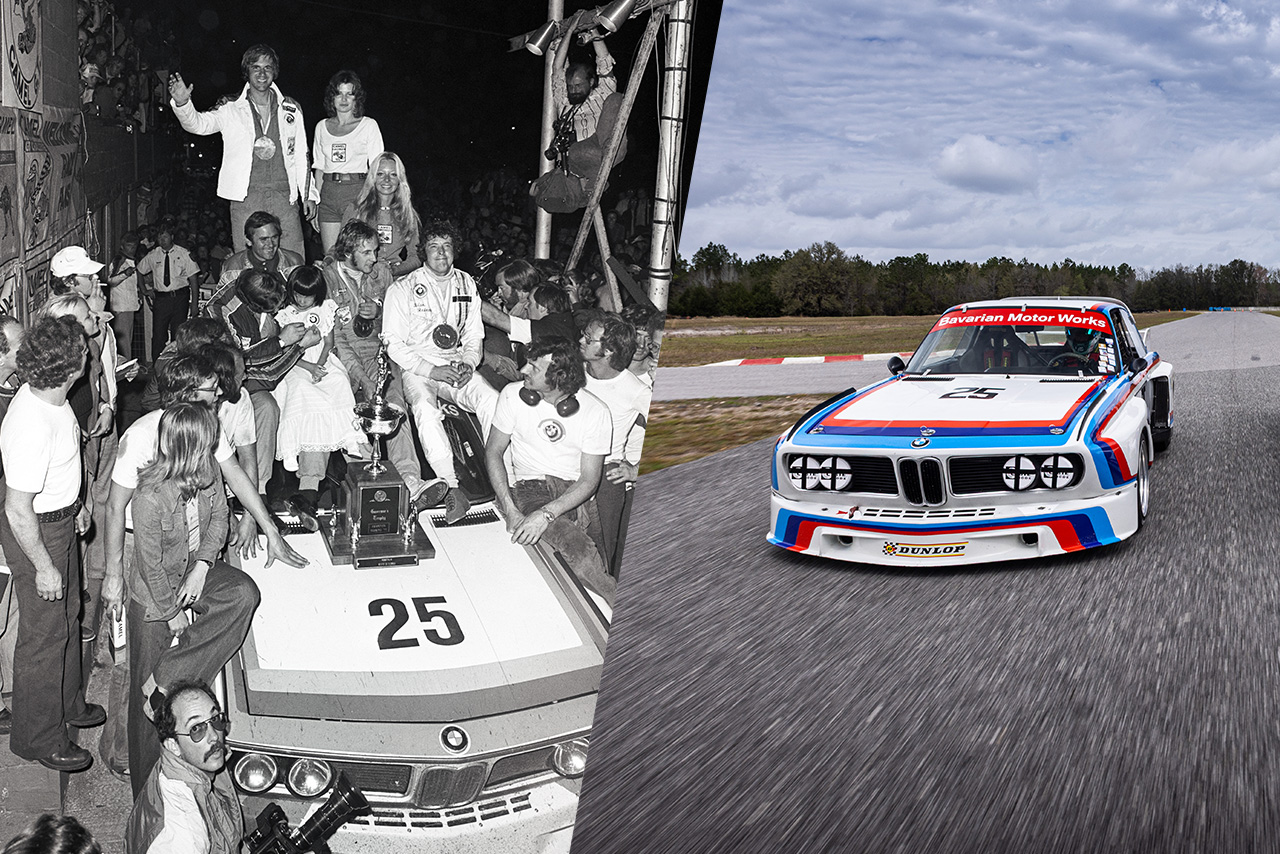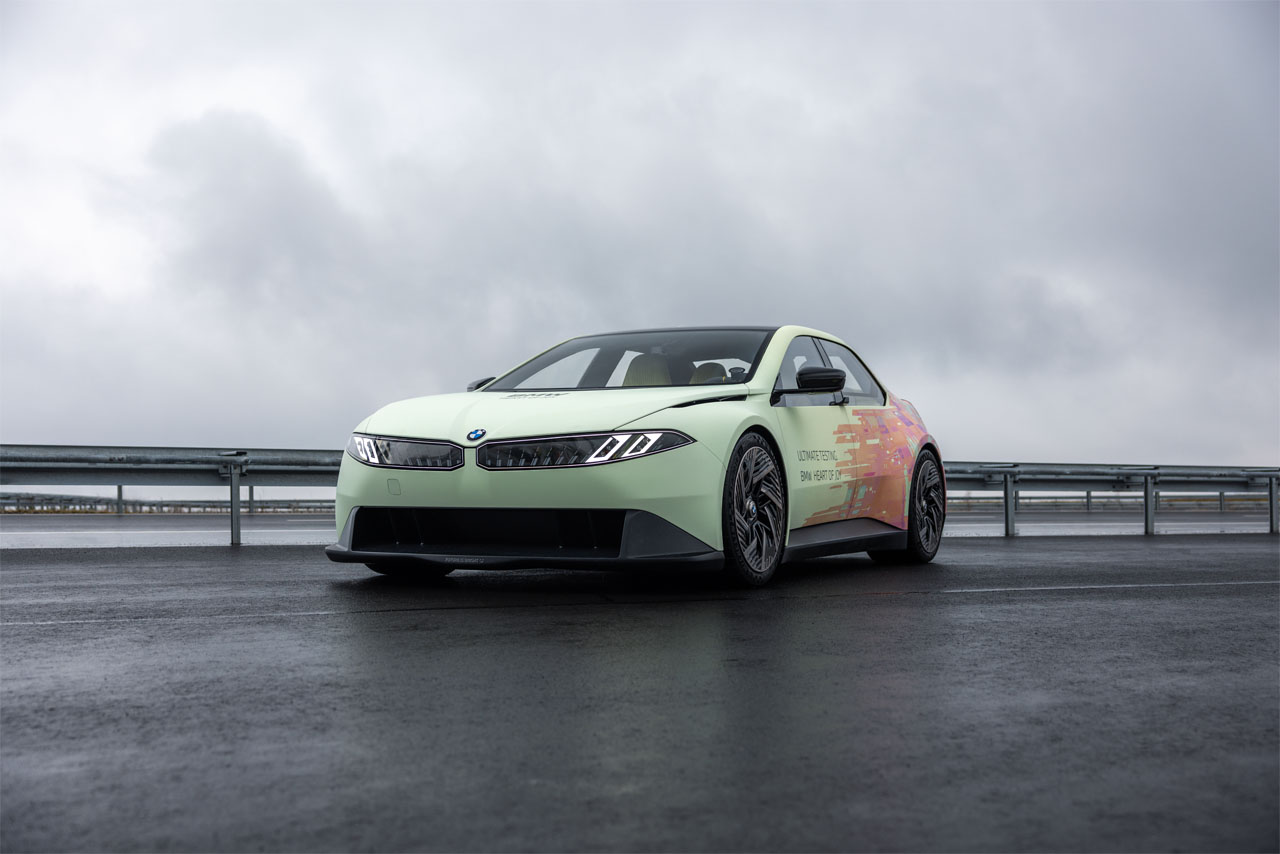50 years, seven generations, a single promise: sheer driving pleasure. Ever since its launch in 1975, the BMW 3 Series has been constantly evolving. The perfect combination of adrenalin and everyday practicality, its designs, engines and innovations never fail to inspire. We look back at half a century of automotive history. Generation by generation.
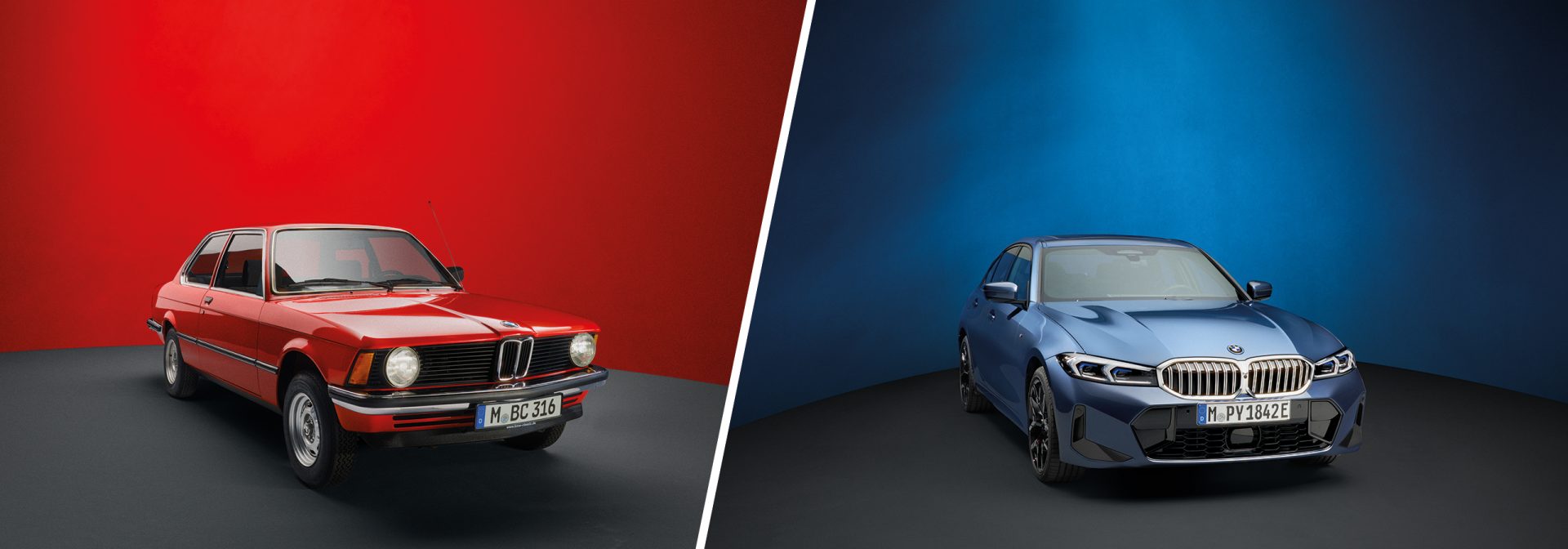
BMW 3 series celebrates 50 years – sheer driving pleasure across seven generations.
From debut to bestseller.
It’s the embodiment of sheer driving pleasure and the world’s bestselling premium car: 50 years ago, the first ever BMW 3 Series was unveiled. The successor to the legendary 02 Series, it offered compact dimensions, a driver-focused cockpit and rear-wheel drive. With its combination of agile handling, dynamism, premium quality and smart technologies, it was the vanguard of a new vehicle class –a winning formula that has so far convinced more than 20 million customers worldwide.
The first BMW 3 Series soon became BMW’s most successful model and an international bestseller. Advances in sportiness, efficiency, safety, comfort, design and connectivity are reflected across its history. From engine and fuel injection technologies to diesel performance and innovative body concepts, it has introduced new innovations to the mid-size segment time and again, exerting a formative influence on the market.
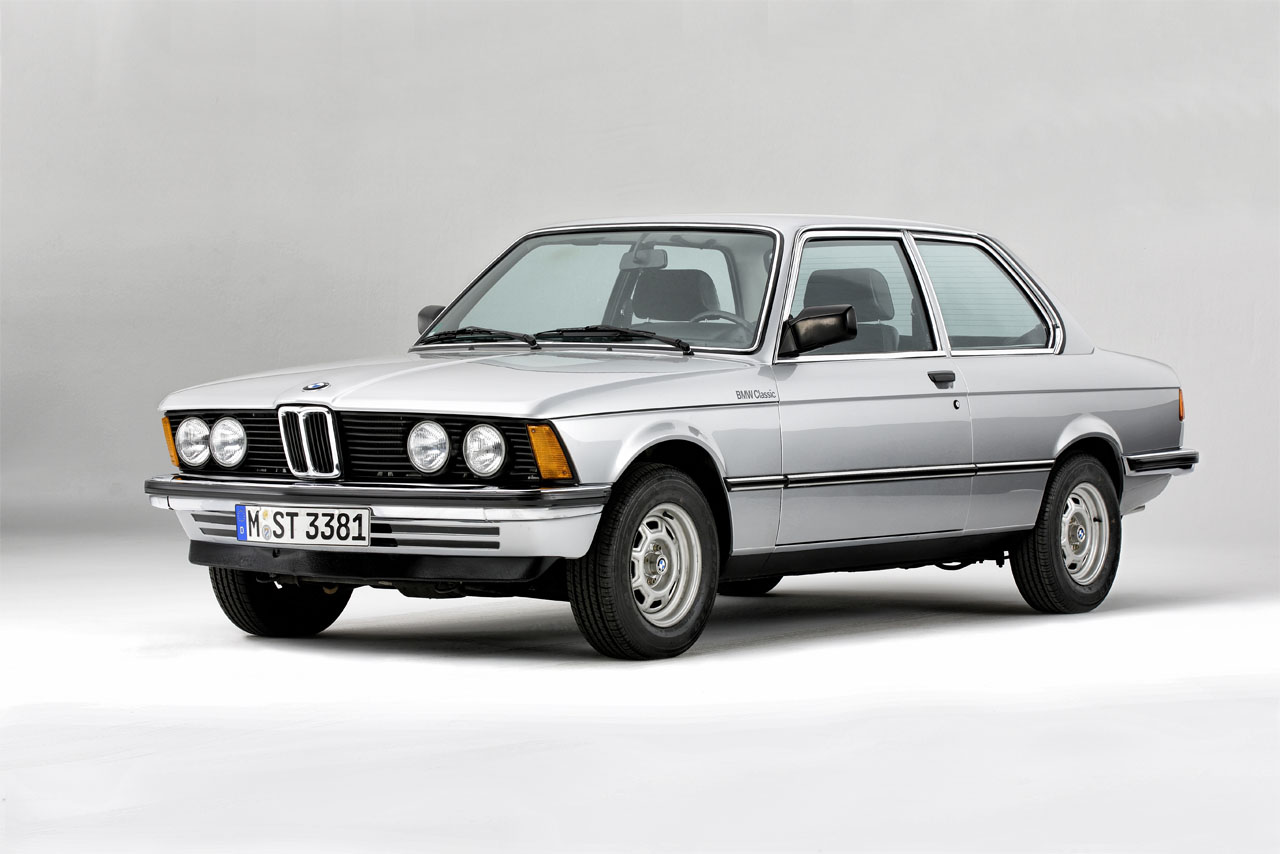
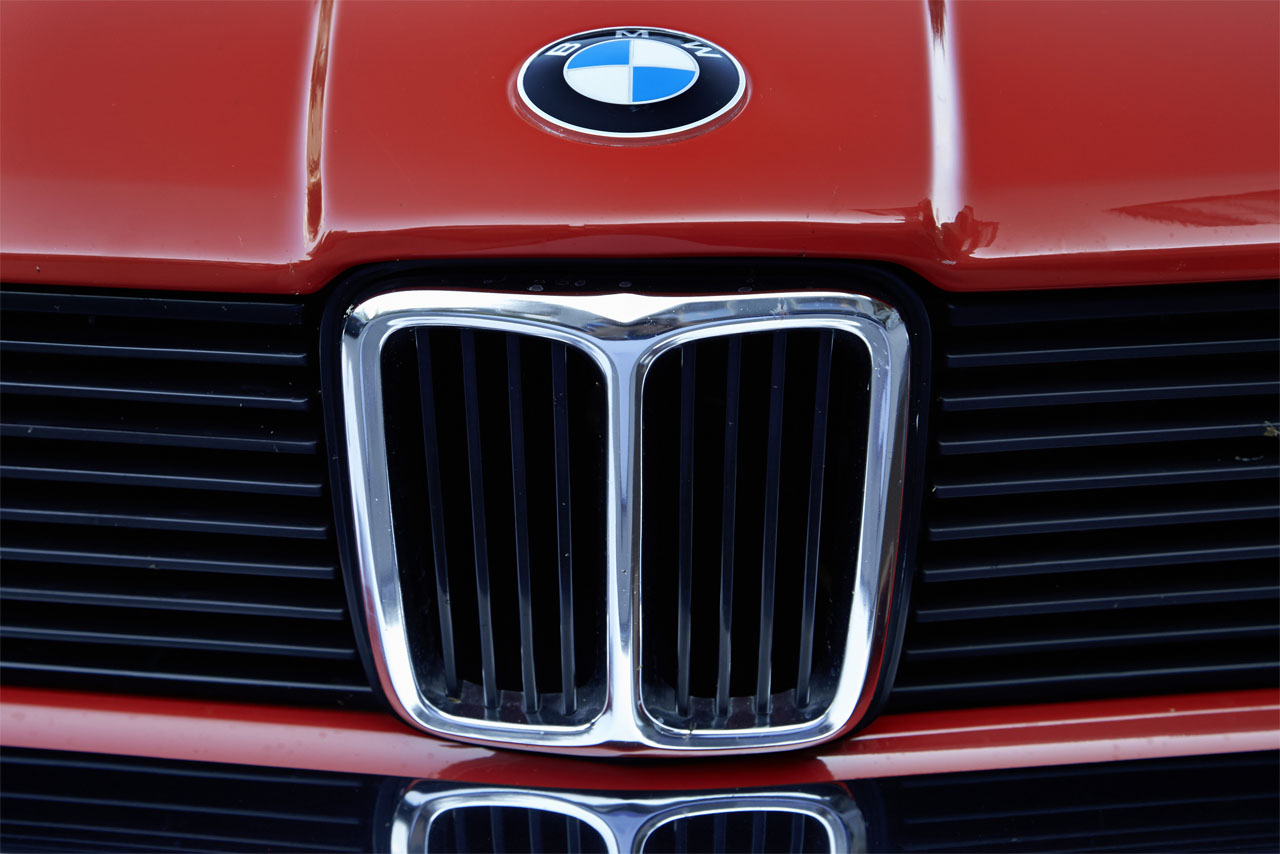
Iconic design and sportiness are the recurring themes.
Striking double headlights, the BMW kidney grille, dynamic sidelines and a powerful rear – the BMW 3 Series is unmistakable. Inside, the cockpit has been driver-focused from the very beginning. And its sporting credentials have been confirmed by a string of successes on the racetrack: from the Group 5 BMW 320 in 1977 to countless triumphs across various generation of the BMW M3.
The BMW 3 Series was sporty but economical even in its first generation. In 1977 six-cylinder engines were rolled out, followed later by revolutionary injection technologies and engine control systems, extremely thrifty diesels and lightweight aluminium and magnesium components. Today, mild-hybrid systems enhance efficiency and acceleration, while plug-in hybrid versions of the 3 Series offer significantly more electric range thanks to the latest high-voltage battery technologies. Sporty roots, contemporary refinement.
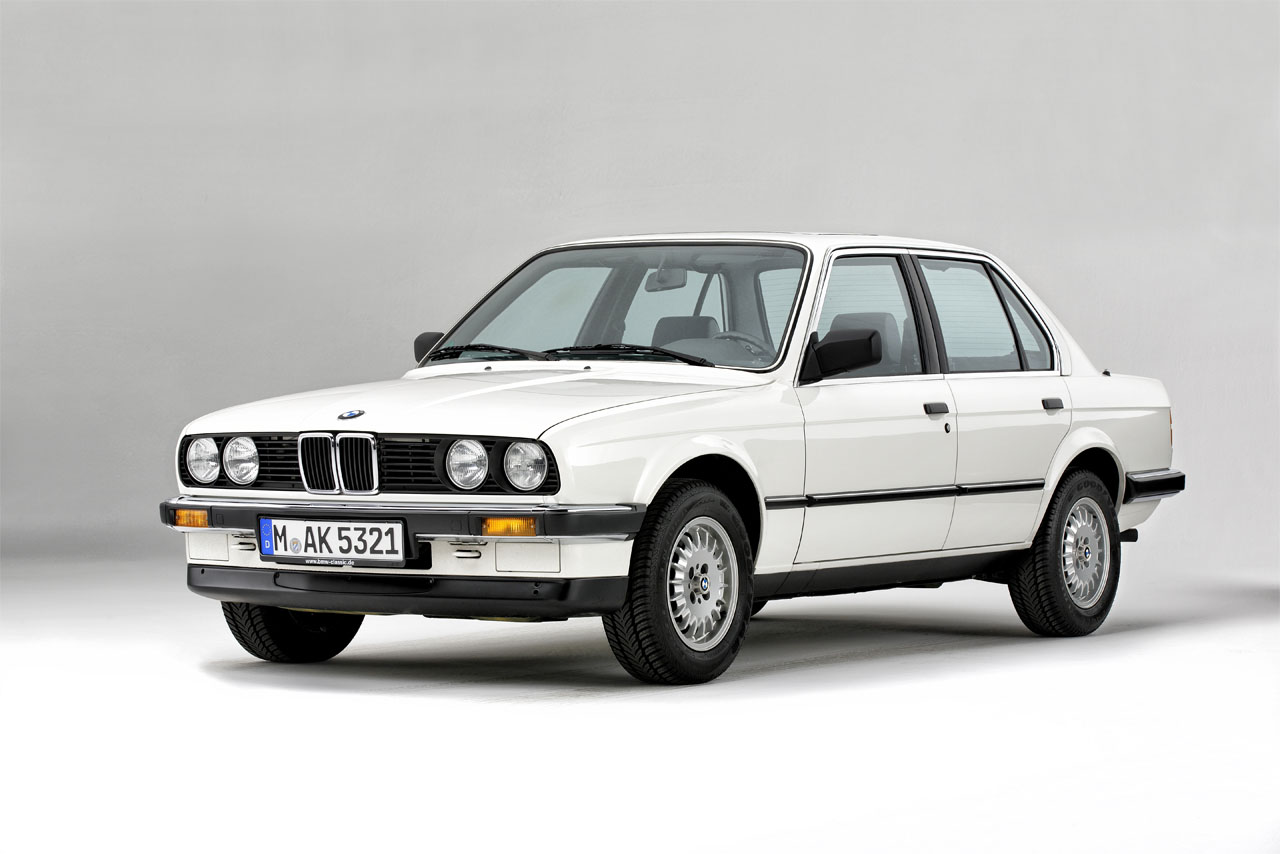
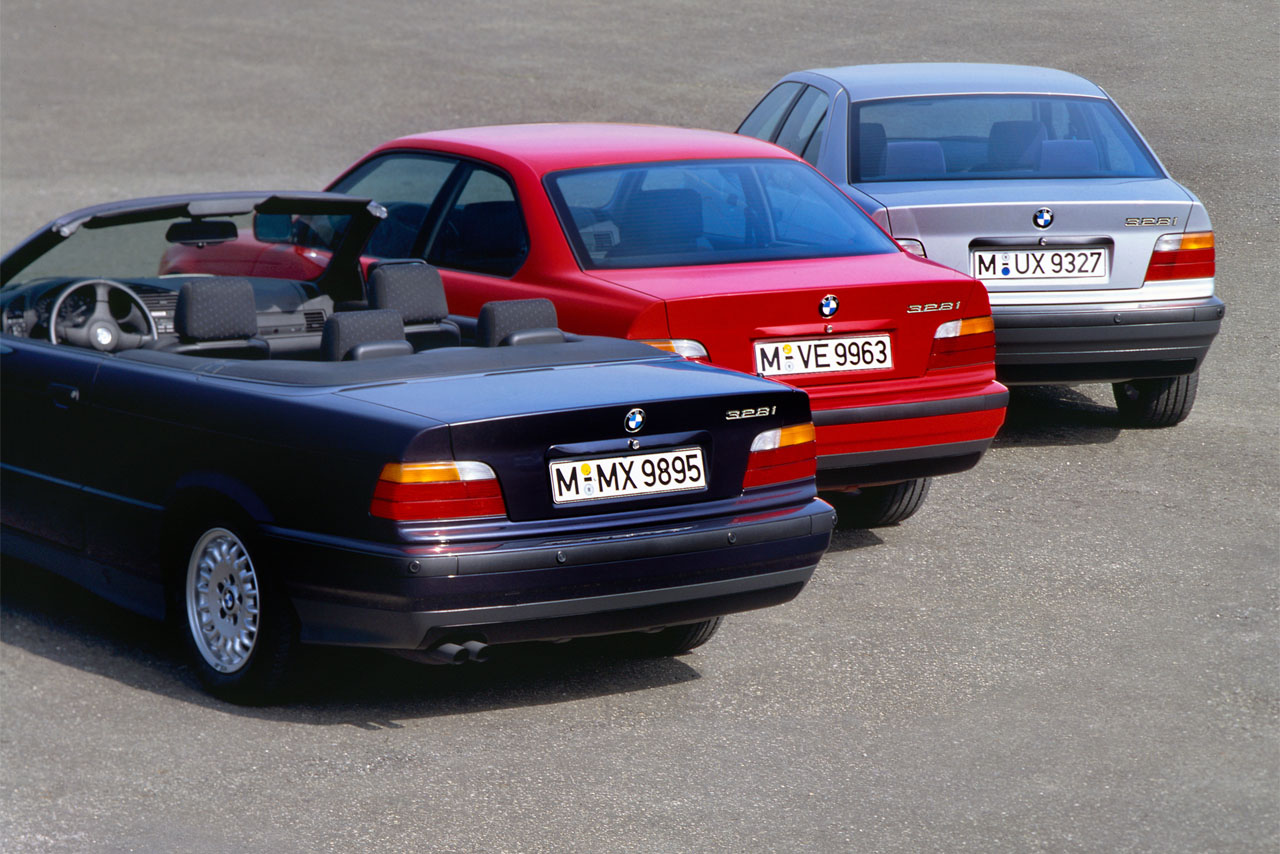
Driving dynamics in many forms.
Since 1975 the BMW 3 Series has combined powerful engines, rear-wheel drive, balanced weight distribution and an advanced suspension. Precise steering and powerful brakes have ensured safe, sporty handling – which remains a core tenet to this day. In 1985 all-wheel drive was incorporated for the very first time. Today the BMW xDrive system is available for seven engine variants in the Sedan alone, ensuring the BMW 3 Series continues to set the bar for agility in its class.
What started as a two-door later became a family car, when in 1983 the second-generation of the 3 Series came to include a four-door. Then came the BMW M3, in 1985; the 3 Series Convertible, developed by BMW, in 1986; the Touring in 1987; and later the E36, an independent Coupe launched in 1992. In 1993 the BMW 3 Series Compact established a new segment. In 2013-2019 the sixth generation of the BMW 3 Series was rounded off by the Gran Turismo, which featured an elevated seating position, coupe-style roofline and variable interior space concept. It also saw the range expanded to encompass two model series: the BMW 3 Series – comprising the Sedan and Touring – and the BMW 4 Series comprising the Coupe, Convertible and Gran Coupe.
Since 2022, the first BMW M3 has completed the lineup, combining racetrack dynamics with everyday practicality.
From trendsetter to pace-setter.
Seven generations, an unmistakable line, continuous evolution: more than any other car, the BMW 3 Series remains the embodiment of “sheer driving pleasure”. Climb inside and you immediately get a sense of why this pioneering innovation became a global bestseller worldwide: because of the way it melds a love of technology with everyday practicality and driving dynamics into a package that has been setting trends and standards for five decades – and is already geared up for the next five.
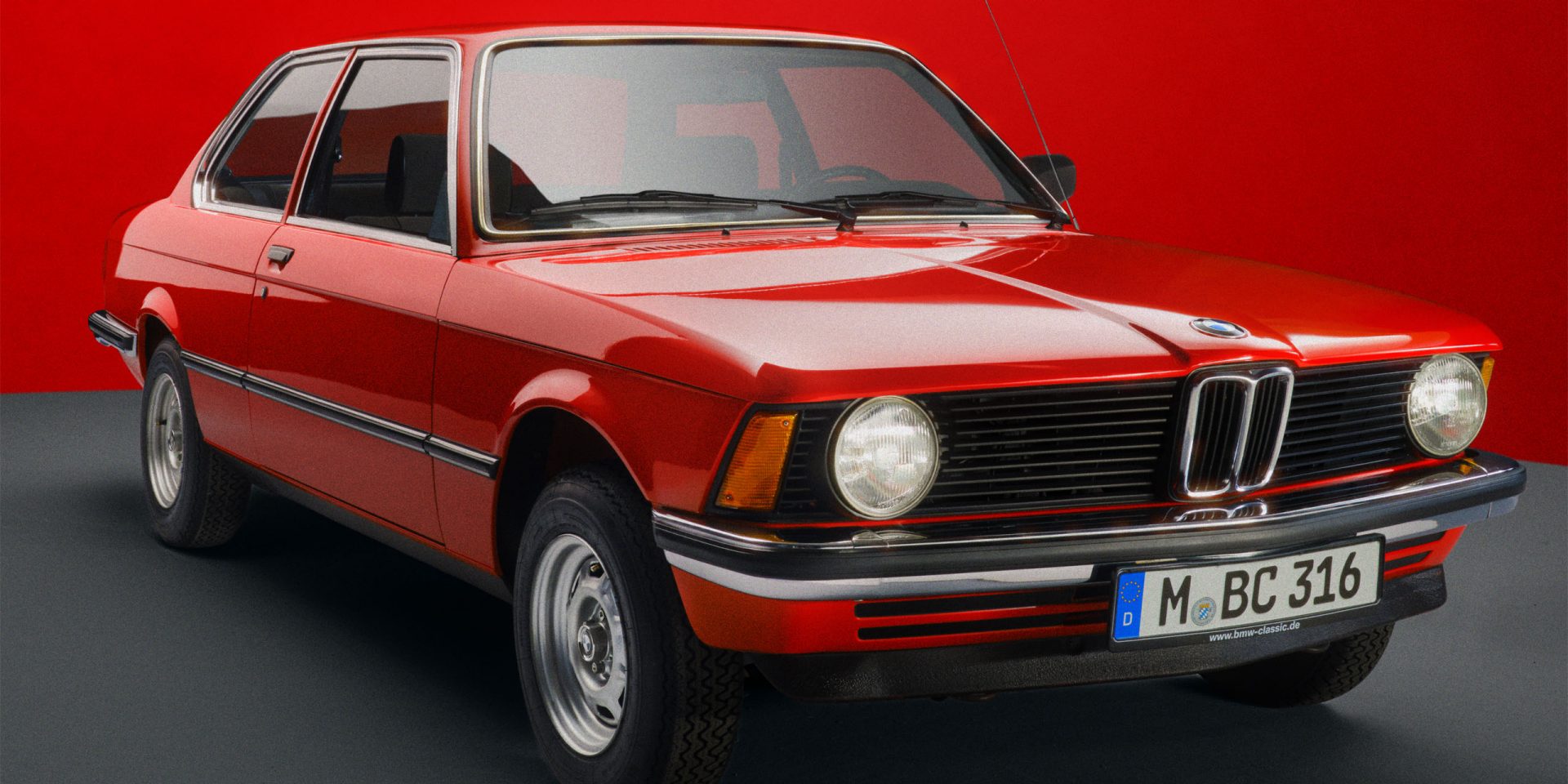
In 1975 the very first BMW 3 Series brought a breath of fresh air to the mid-size segment, immediately proving that sheer driving pleasure needn’t be the preserve of the upper segments. The two-door embodied the sporting DNA of the legendary BMW 02 – but added a little more comfort to the mix.
In creating this model, design chief Paul Bracq opted for crisp lines. The kidney grille and rounded double headlights were available in the more powerful versions only – or as options. The coupe-style window line featured the Hofmeister kink, and the bonnet displayed a subtle muscularity. Inside, the first ever driver-focused cockpit ensured superior ergonomics – and remains a hallmark feature to this day.
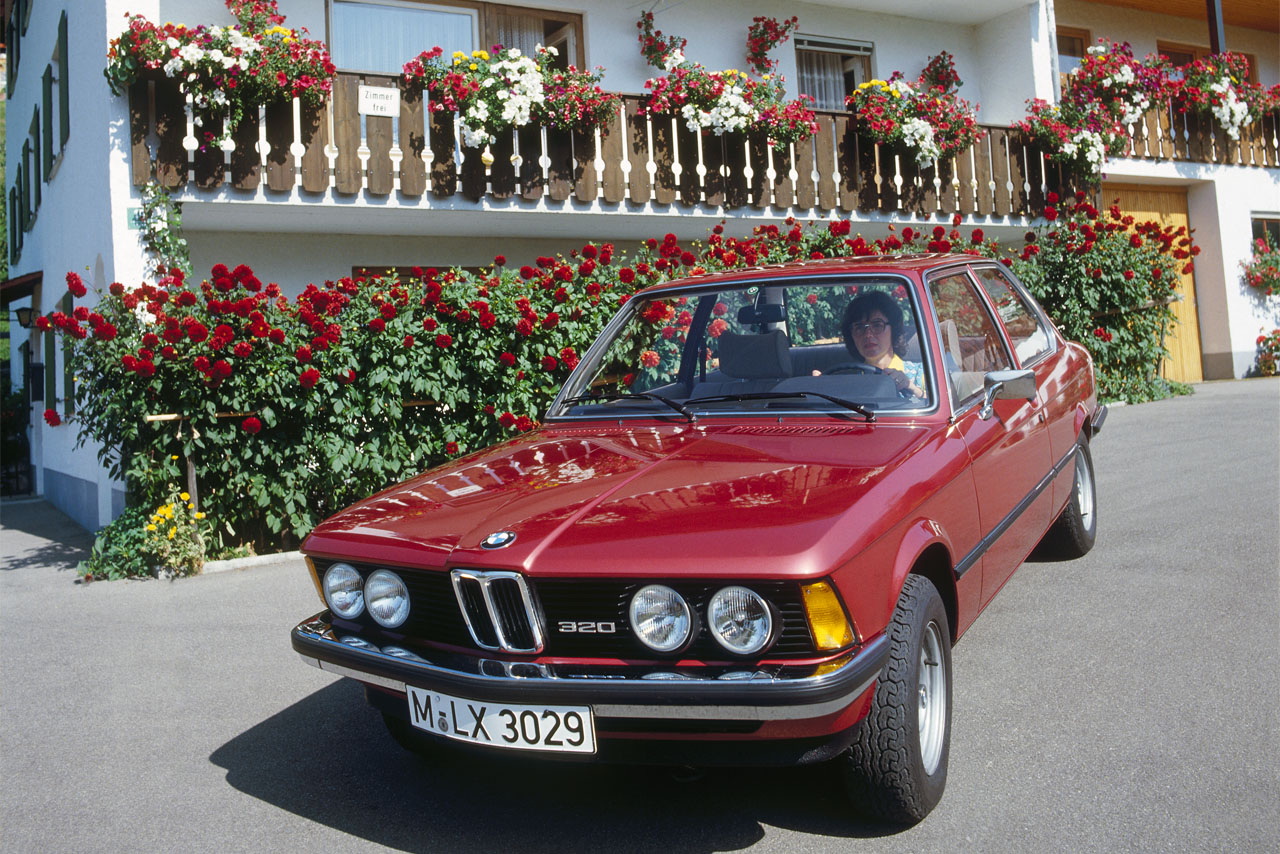
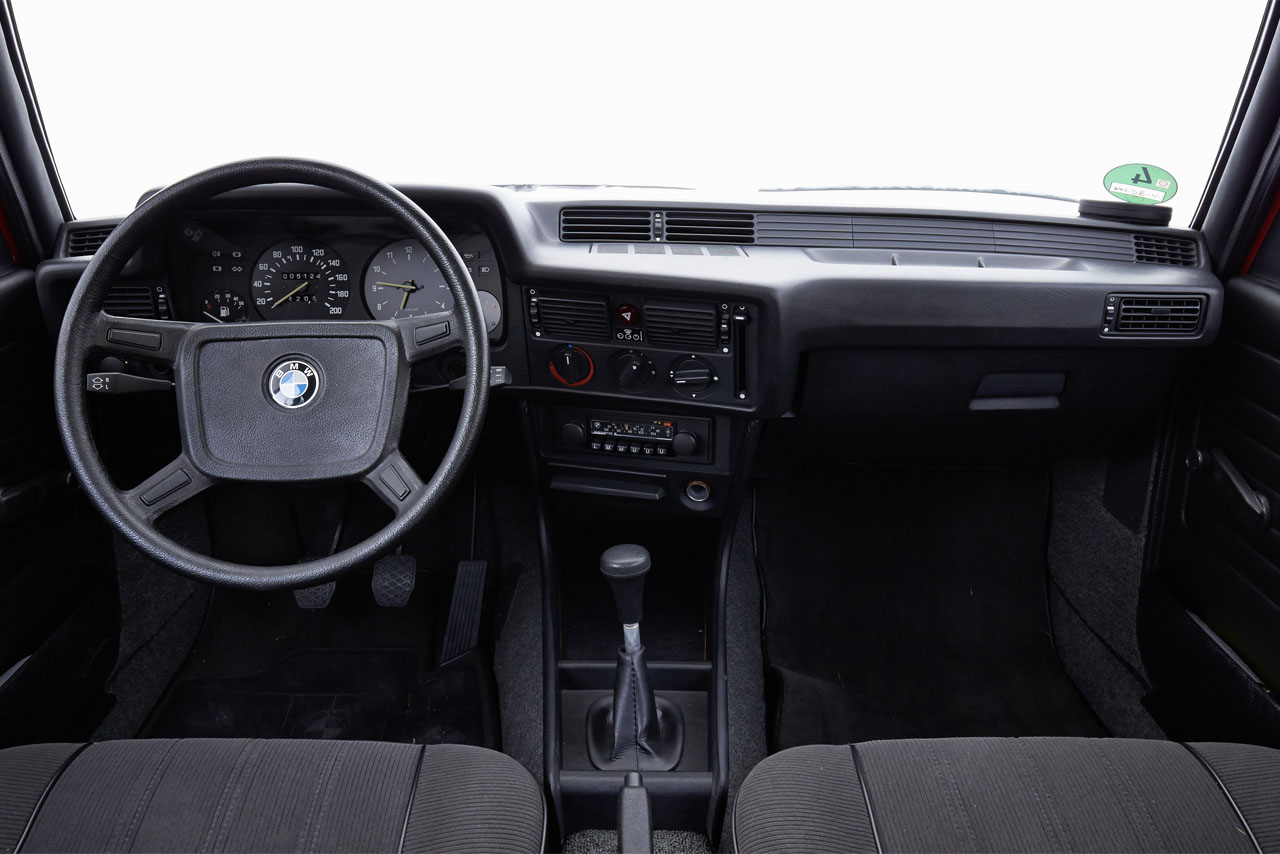
Performance meets lifestyle: bmw 3 series takes to the
fast lane.
In its debut generation, the BMW 3 Series was released as the 316, 318, 320 and 320i – the latter delivering 92 kW/125 hp thanks to fuel injection. In 1977 the straight six-cylinder engine powering the 323i took things up a notch, delivering 105 kW/143 hp and accelerating from 0-100 km/h in 9.0 seconds. A McPherson front axle and the all-new rack-and-pinion steering system ensured precise responses from the chassis – without compromising everyday comfort.
In 1981 a new entry-level model was launched: the 315. Meanwhile, the Stuttgart-based coachbuilder Baur was opening up the roof to create a convertible with rollover bars – for all engine variants. That same year the BMW 3 Series passed the one-million mark. By 1983 it had clocked up 1,364,039 sales, making it the most successful model series in the history of the company. Compact, mature and agile, the first BMW 3 Series had laid the foundation for a legend that sets standards to this day.
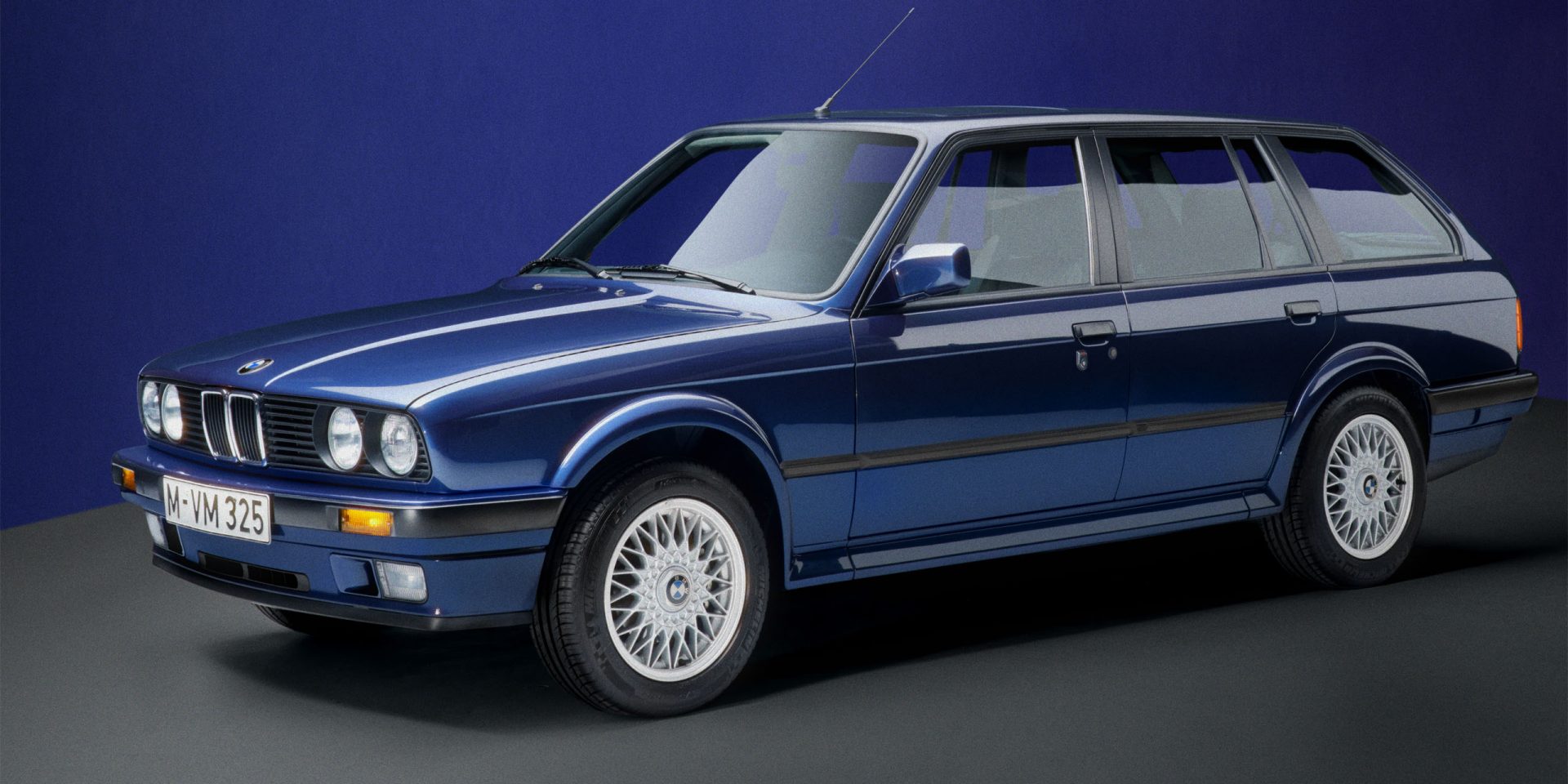
1982 saw the BMW 3 Series enter round two, with a new version that was more aerodynamic (its drag coefficient was down by almost 15 percent), lighter and offered 4 cm more space inside. Its taut lines, matt-black B pillar, double headlights – which now came as standard – and a 35-mm wider track gave it a broad stance on the road. And under the bodyshell, the engineers had managed to save about 30 kg in weight – despite the more extensive equipment. The overhauled front axle, new semi-trailing-arm rear axle and more responsive rack-and-pinion steering ensured BMW’s trademark sheer driving pleasure and poise.
In 1985 a new all-wheel drive system was introduced.
The BMW 3 Series also opened up new possibilities in terms of drive. With the 316 and 318i as entry-level models, the 323i delivered 102 kW/139hp and reached a top speed 202 km/h. In 1984 the 325e followed, with a 2.7-litre inline eta six-cylinder engine and a catalytic converter as standard. This car was all about torque and fuel economy, with fuel consumption of 8.4 l/100 km. Rounding off the petrol line-up was the 325i, which delivered 126 kW/171hp and featured digital engine electronics. The first diesels were highly efficient too: the 1985 324d, with fuel consumption of 6.9 l/100 km, and the 1987 324td, with output of 85 kW/115hp, both featured inline six-cylinder turbo diesel engines with Digital Diesel Electronics (DDE).
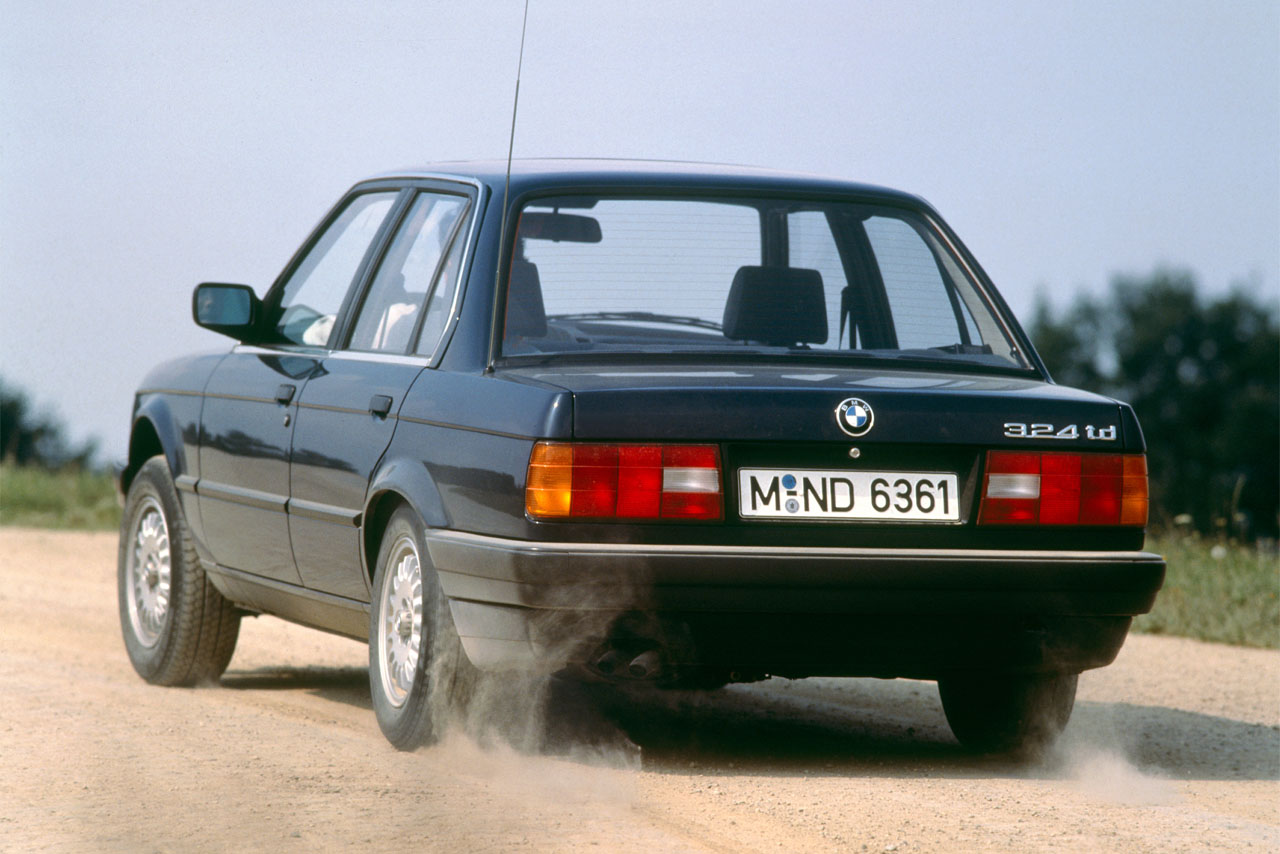
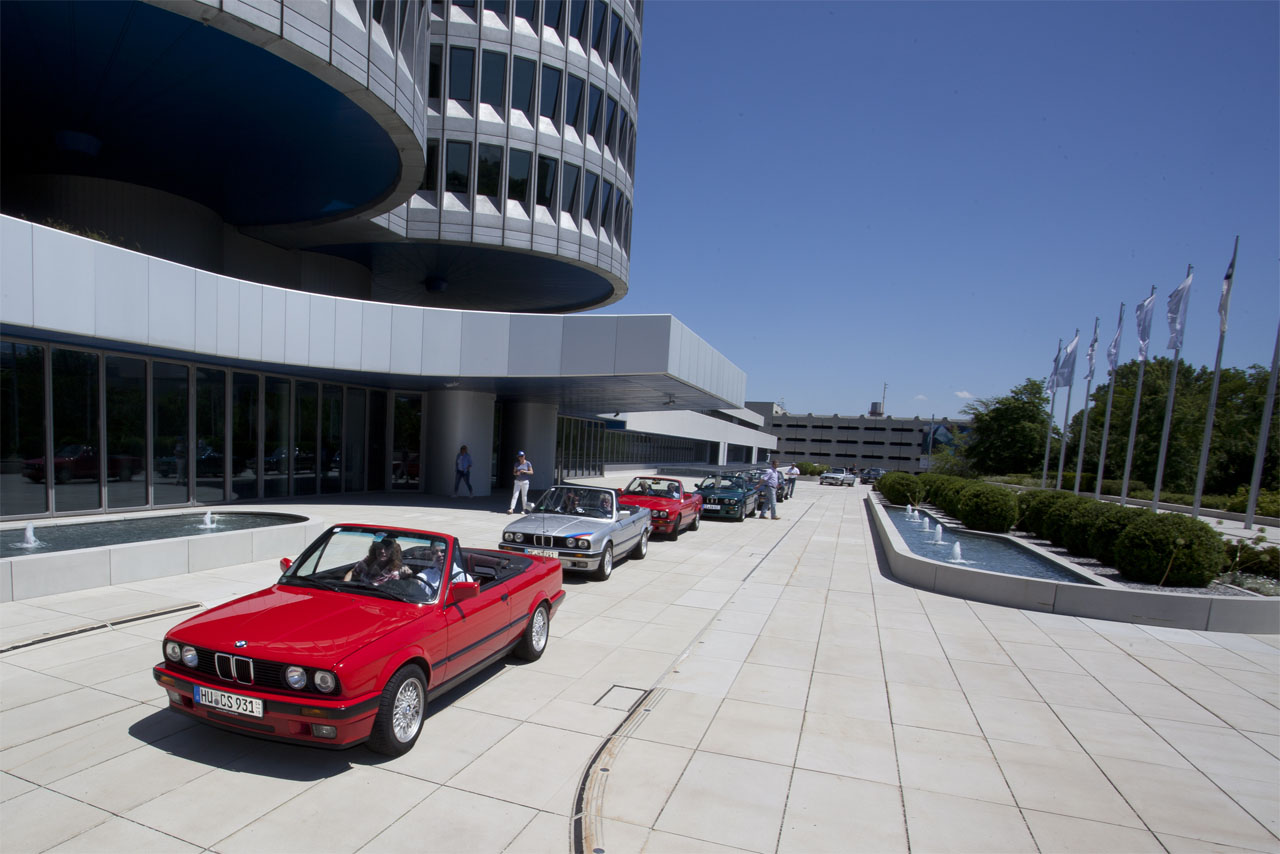
From family friend to driving machine.
But the advances were not just happening under the bonnet. In 1983 the four-door was launched, followed in 1986 by the aesthetic BMW-developed Convertible with its elegant silhouette, low shoulder line and occupants excitingly close to the road. In 1987 the BMW 3 Series Touring turned the hatchback segment sporty and the E30 found itself on the cusp of a new technology: eight 325iX models were converted to electric front-wheel drives and trialled in everyday conditions – silently anticipating what the future would hold.
The second generation of the BMW 3 Series (E30) immediately took off: by 1994 a total of 2,339,251 units had left the factory gates – almost a million more than its predecessor. Once and for all, the BMW 3 Series had risen to become the company’s biggest-selling model series worldwide – and remains so to this day.
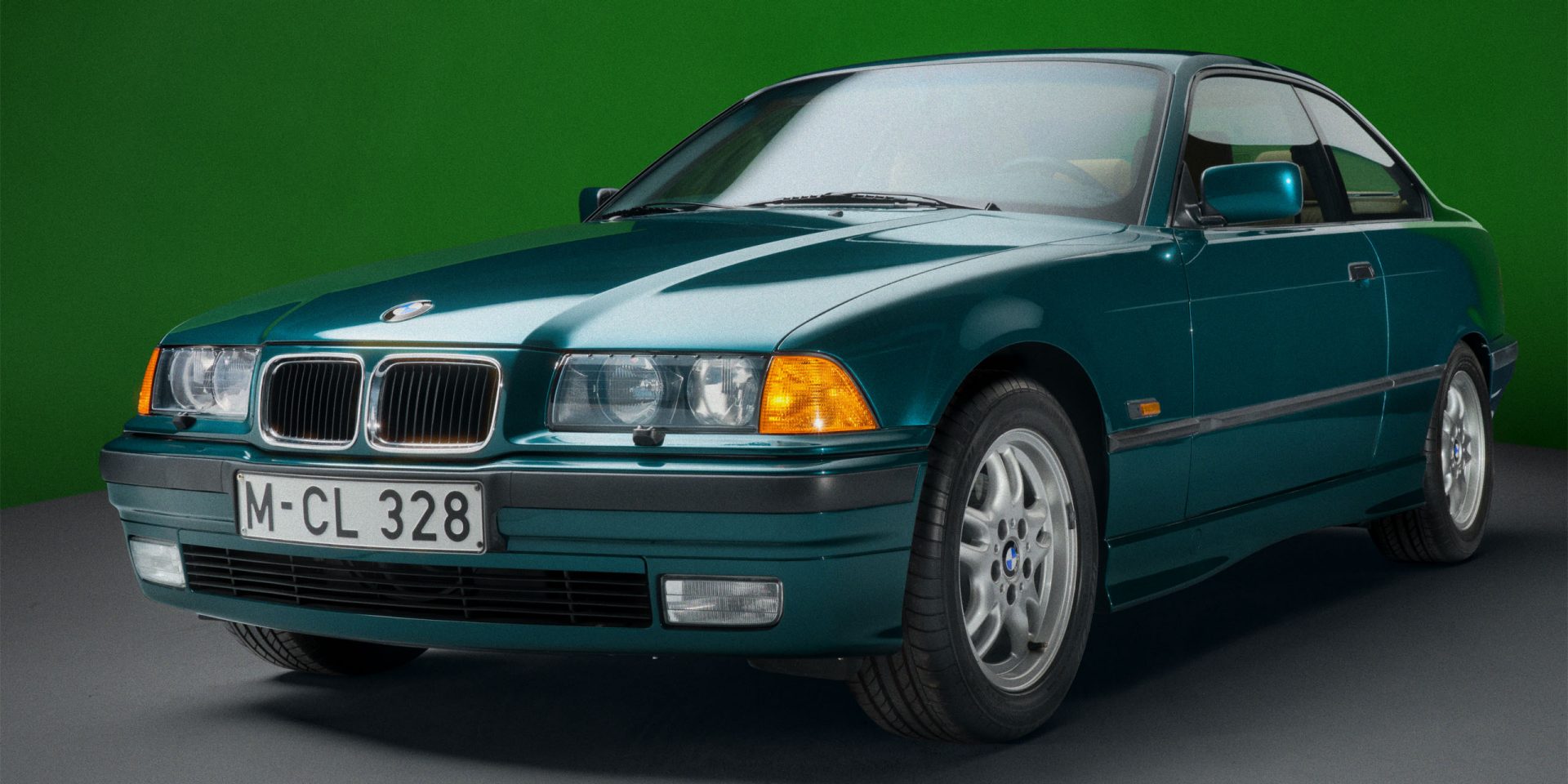
In 1990 the third generation of the BMW 3 Series confidently took to the stage, featuring more space, a striking design and significantly refined technology. A longer wheelbase gave it balanced proportions and enhanced stability, while a broader track enabled tighter handling. Rear-seat passengers got to enjoy 30 mm more legroom. Short overhangs and a low silhouette emphasised the dynamic lines of the car, while the smooth front made a striking feature: the double headlights were now behind a single glass cover. This design remains standard to this day and helps protect pedestrians.
In terms of what’s under the bonnet, the 316i (74 kW/100 hp) and the 318i (83 kW/113) now set the baseline, while the 320i (10 kW/150 hp) and the 325i (141 kW/192 hp) with their state-of-the-art inline four-valve, six-cylinder engines were the top of the range. In 1992 variable camshaft timing (VANOS) came onto the scene, cutting fuel consumption: it initially featured in the BMW M3, with its 3.0-litre, 210 kW/286 hp engine delivering a 0-100 km/h sprint in 5.9 seconds. By 1995 it had made its way into the 3.2-litre engine, which delivered 321 hp. Meanwhile, diesel fans had the 325td (85 kW/115 hp), 325tds (105 kW/143 hp) and later the thrifty 318td (66 kW/90 hp, 5.9 l/100 km) to look forward to. From 1995 aluminium six-cylinders saved weight and powered the new 328i (142 kW/193 hp).
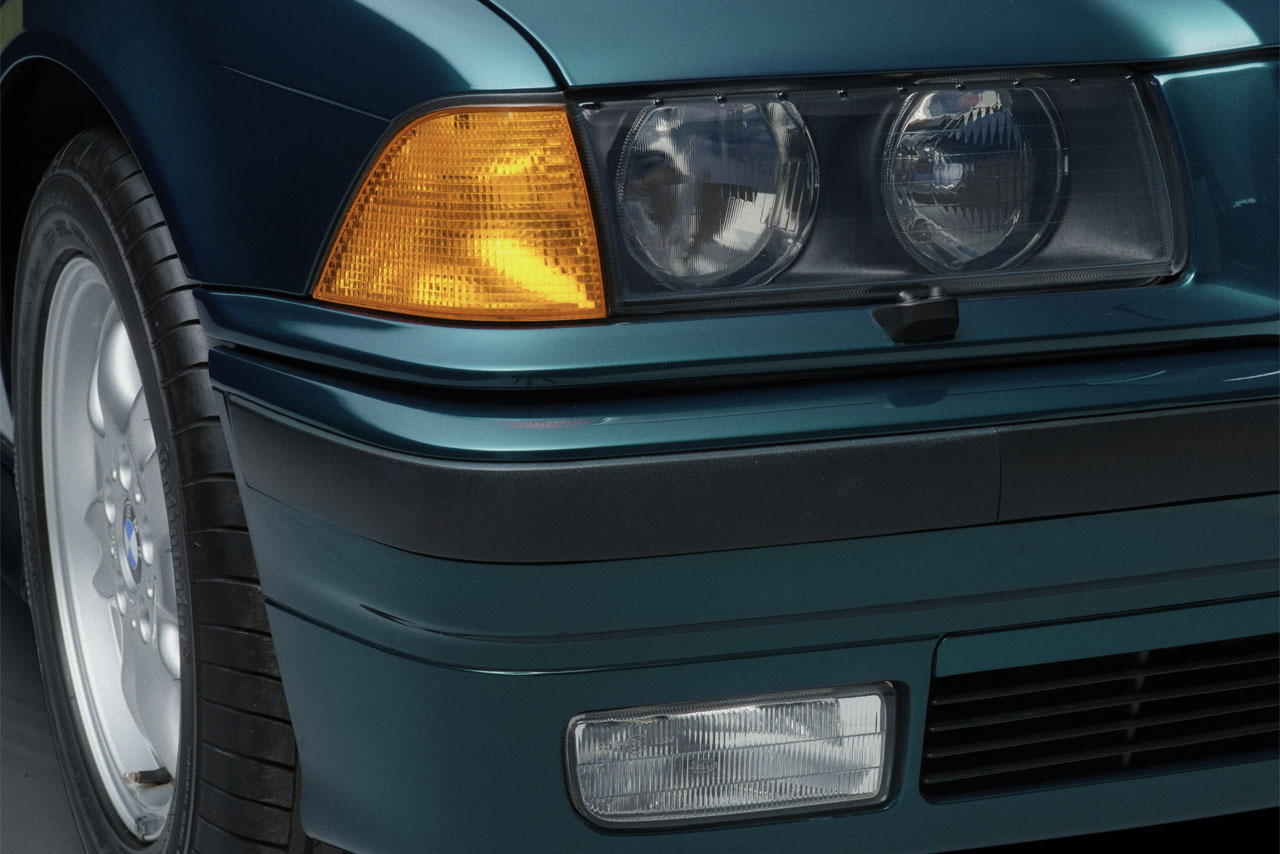
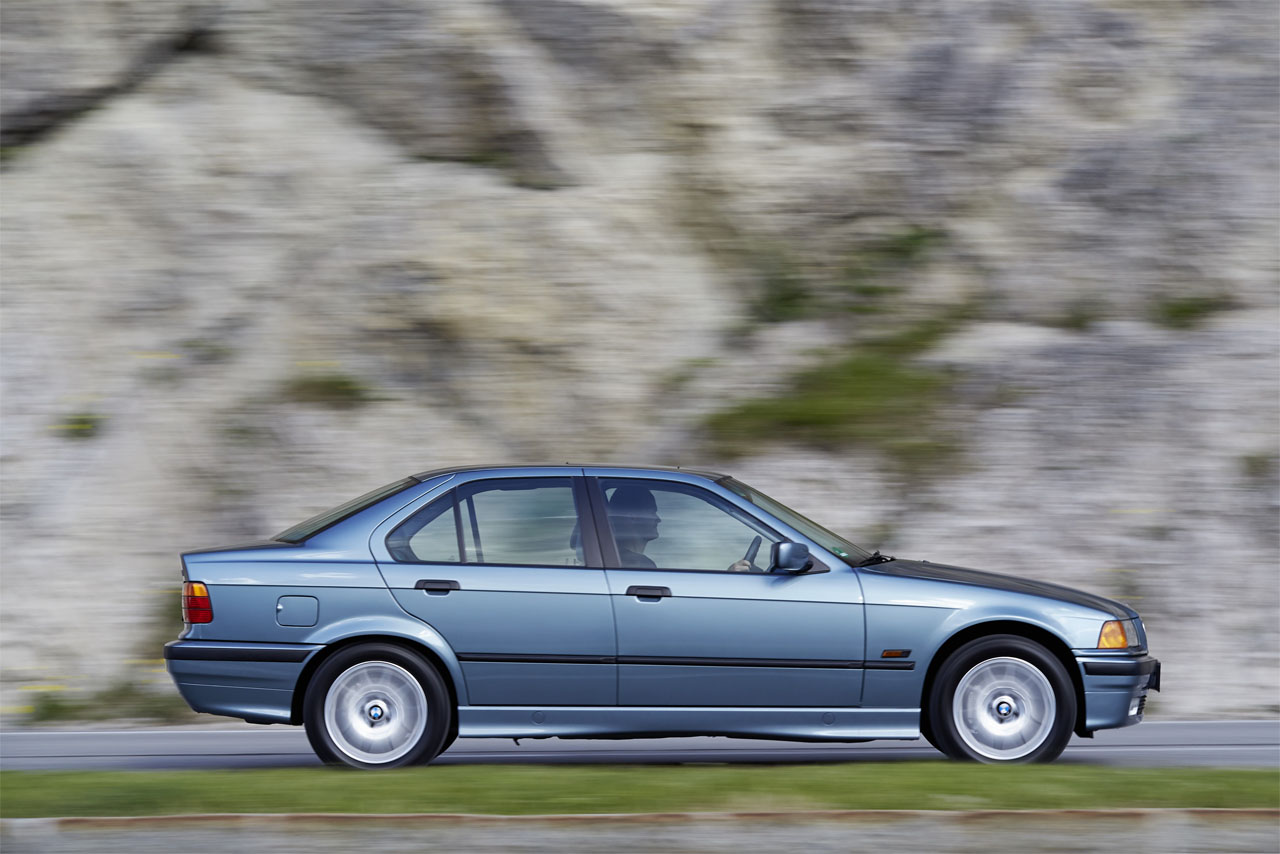
Superior handling, various forms, record sales.
On the chassis, the central control arm on the rear axle offered superior grip and comfort. Starting with the 318i, power steering came as standard, and from 1992 the anti-lock braking system (ABS) was mandatory. The brakes of the new generation were now stronger, and optional automatic stability control (ASC) made the car even safer by automatically restricting power output from the engine whenever there was a loss of traction. 1997 saw the introduction of an extended ASC system called ASC+T, which increased stability when pulling away and on bends through brake interventions on the rear wheels.
In the third generation, the range of body options underwent unprecedented growth. In 1992 the independent Coupe was launched, which was 3 cm less high, featured frameless doors and formed the basis for the M3. The Convertible followed in 1993, with its low shoulder line and optional hardtop. In 1994 the BMW 3 Series Compact arrived, taking everyone by surprise: at just 4.21 m long, it had a large tailgate and was practical, agile and a BMW through and through. 1995 saw the return of the variable Touring.
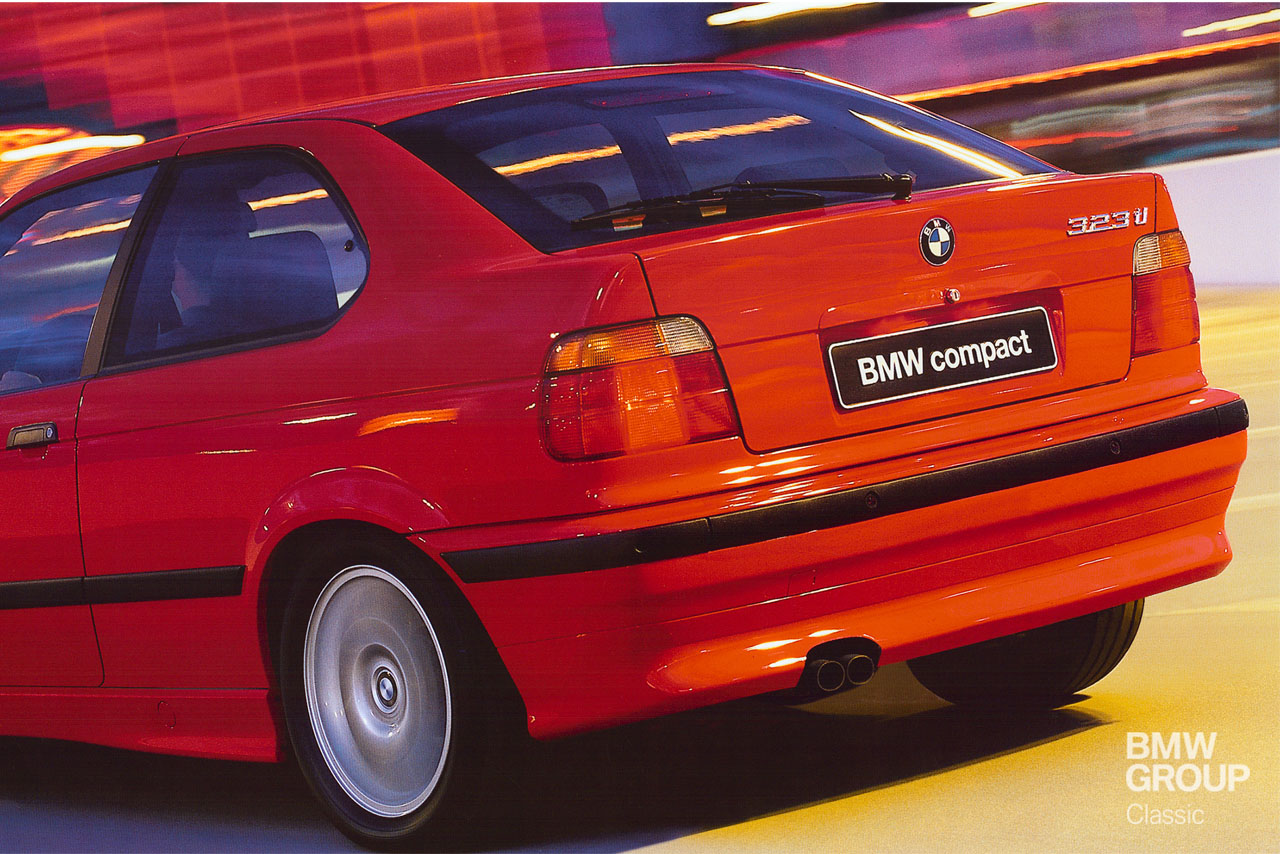
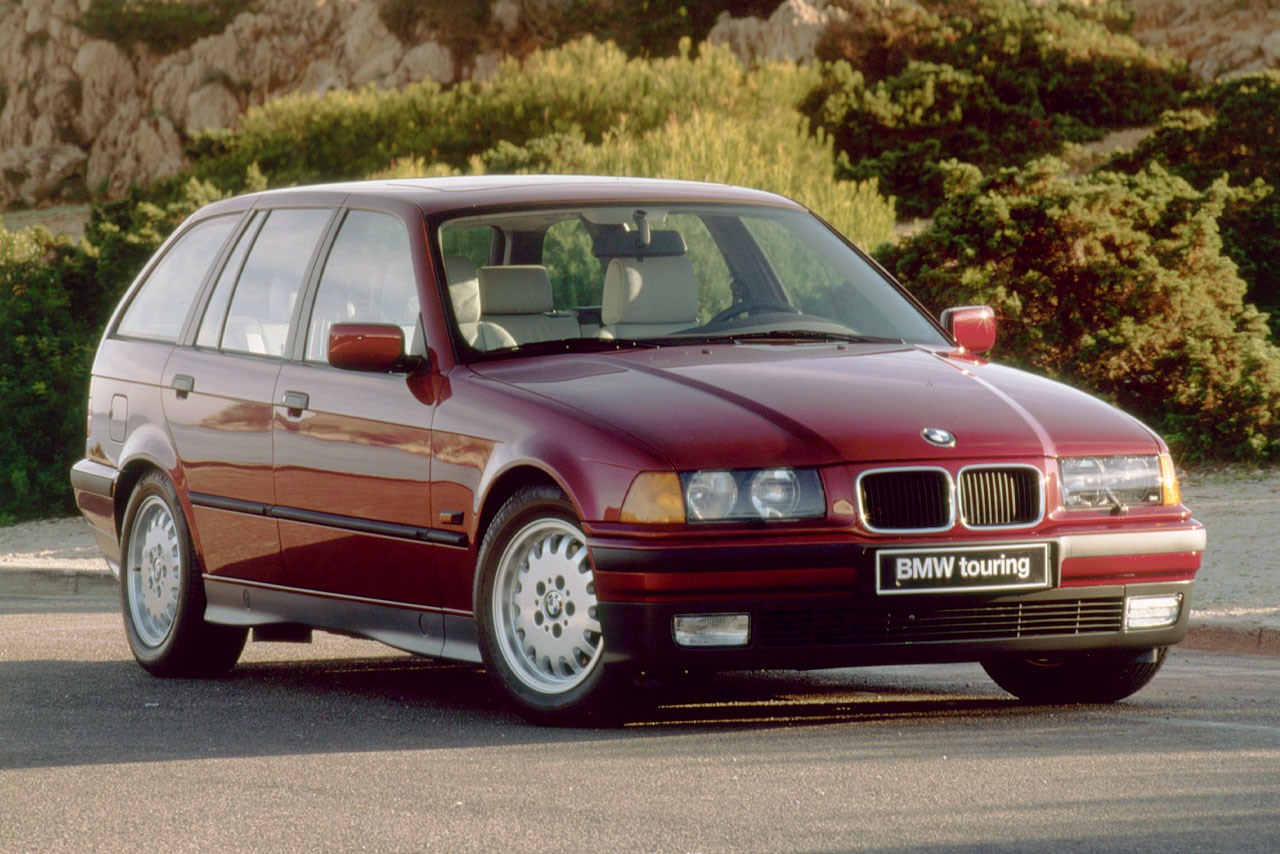
By 2000, a record 2.75 million E36s had rolled off the production line, offering impressive confirmation of the winning formula that combined style, technology and variety. With the third-generation BMW 3 Series, the everyday became elegant – and the elegant became fun.
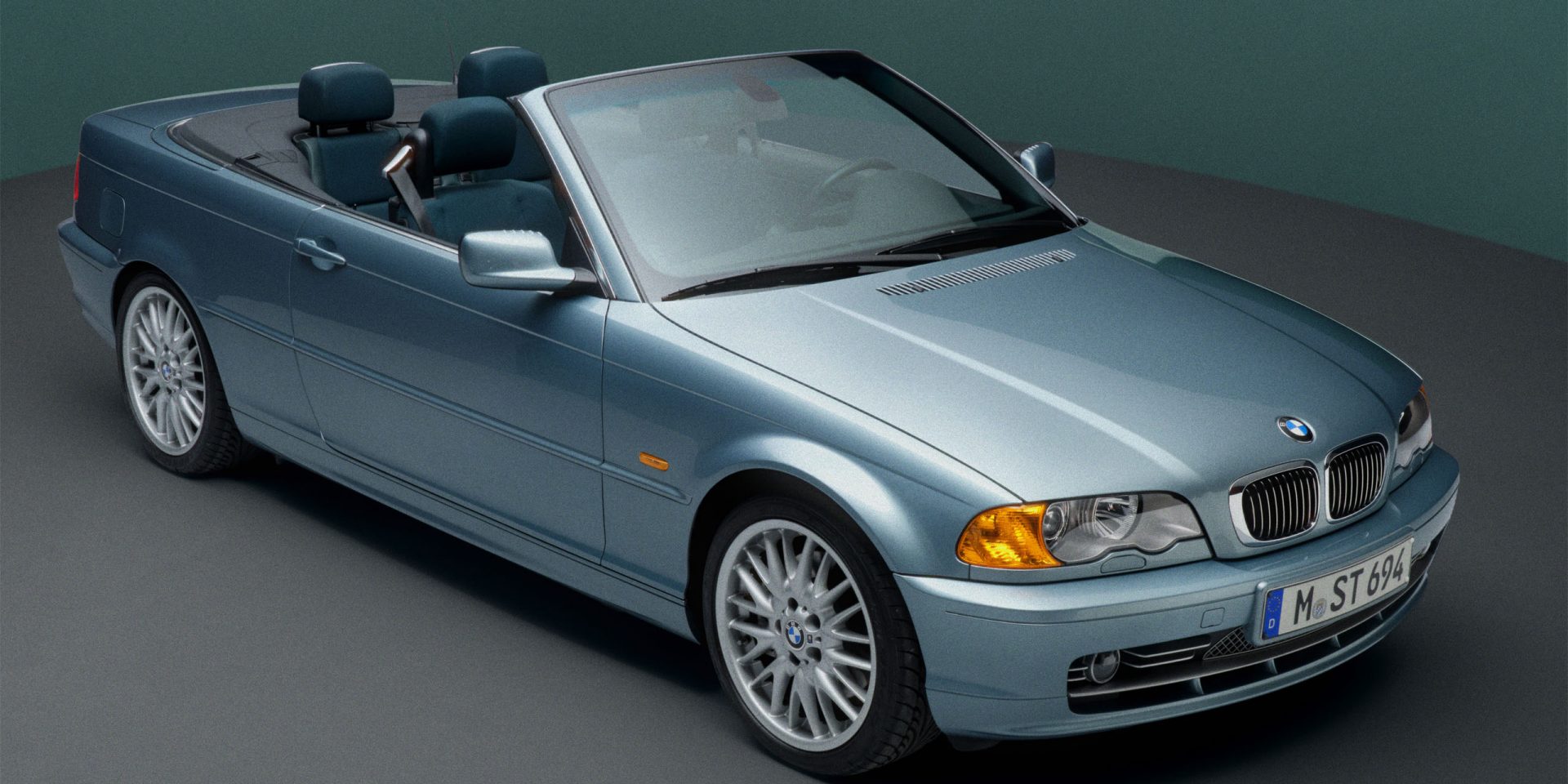
Stylish, sporty and uncompromisingly modern – that’s how the fourth generation of BMW 3 Series presented itself in the spring of 1998. Its lines, proportions and details seemed familiar, yet somehow refreshed: the kidney grille was now integrated into the bonnet and flanked by two double headlights behind clear covers. The flowing sideline and gently rising roofline pointed to a new century ahead, the L-shaped rear lights adding the finishing touch.
Inside, there was now more space, with an additional 20 mm of legroom and 10 mm of headroom in the rear. The interior equipment and safety concept took their cues from the 7 Series, with a new, generous design for the instrument panel, a multifunctional steering wheel, side airbags in the rear, rain sensors and a navigation system setting new standards in the segment. The testers from Autorevue motoring magazine summed up the situation with the words: “The essence of BMW is distilled in the 3 Series.”
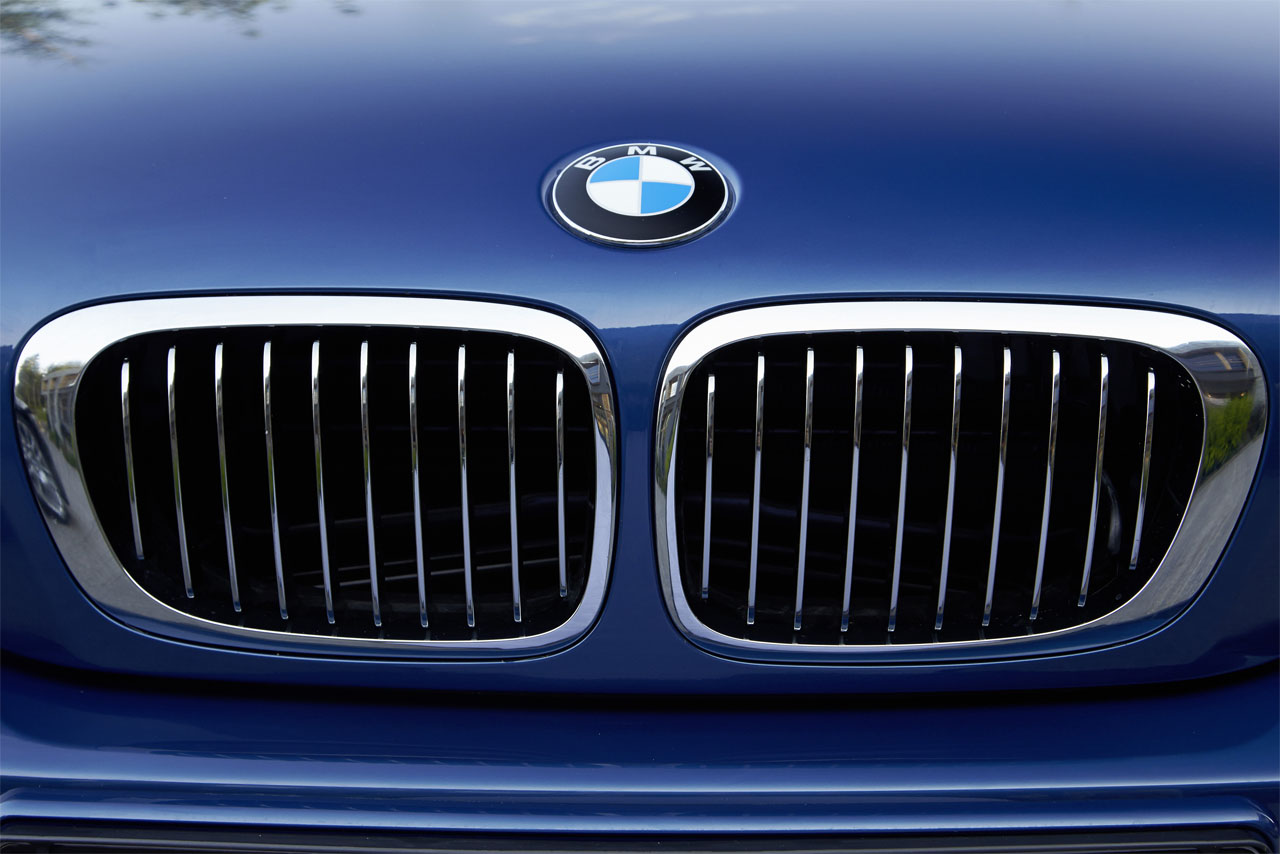

First BMW diesel with direct injection.
The E46 set standards from the get-go, with its 318i (87 kW/118 hp), 320i (110 kW/150 hp), 323i (125 kW/170 hp), 328i (142 kW/193 hp) and 320d engines – the latter being the first diesel to feature direct injection. In 2000 there was a reshuffle: the 320i carried over from the previous generation was joined by the 325i and 330i (170 kW/231 hp), completing the range of six-cylinder petrol models. In addition, the 330d (135 kW/184 hp) was introduced, featuring common-rail technology. In 2001 BMW demonstrated its pioneering spirit yet again, when it unveiled its new, exclusive VALVETRONIC system in the 316ti Compact, where it cut fuel consumption by as much as 10 percent.
Meanwhile, the range of body options was growing faster than ever before. In 1999 an independent Coupe was launched, which was lower, broader and longer. Shortly after came the Touring, a dynamic five-door with generous cargo space. And in 2000 came the Convertible, which featured integrated seatbelts for the front seats as standard – a first in this class of vehicles. It also had a rollover bar in the windscreen frame plus two further bars that automatically extended from the rear headrests as required. But the crowning glory was the new M3 (252 kW/343 hp) with its 3.2-litre inline six-cylinder engine and power dome bonnet. From 2001 it was available as a Convertible too. Also in 2001 came the new 3 Series Compact, with its characteristic face and additional space. The two-door range now featured diesels as well, in the shape of the 330Cd, launched in 2002, and the 320Cd/330Cd Convertible, released in 2004.
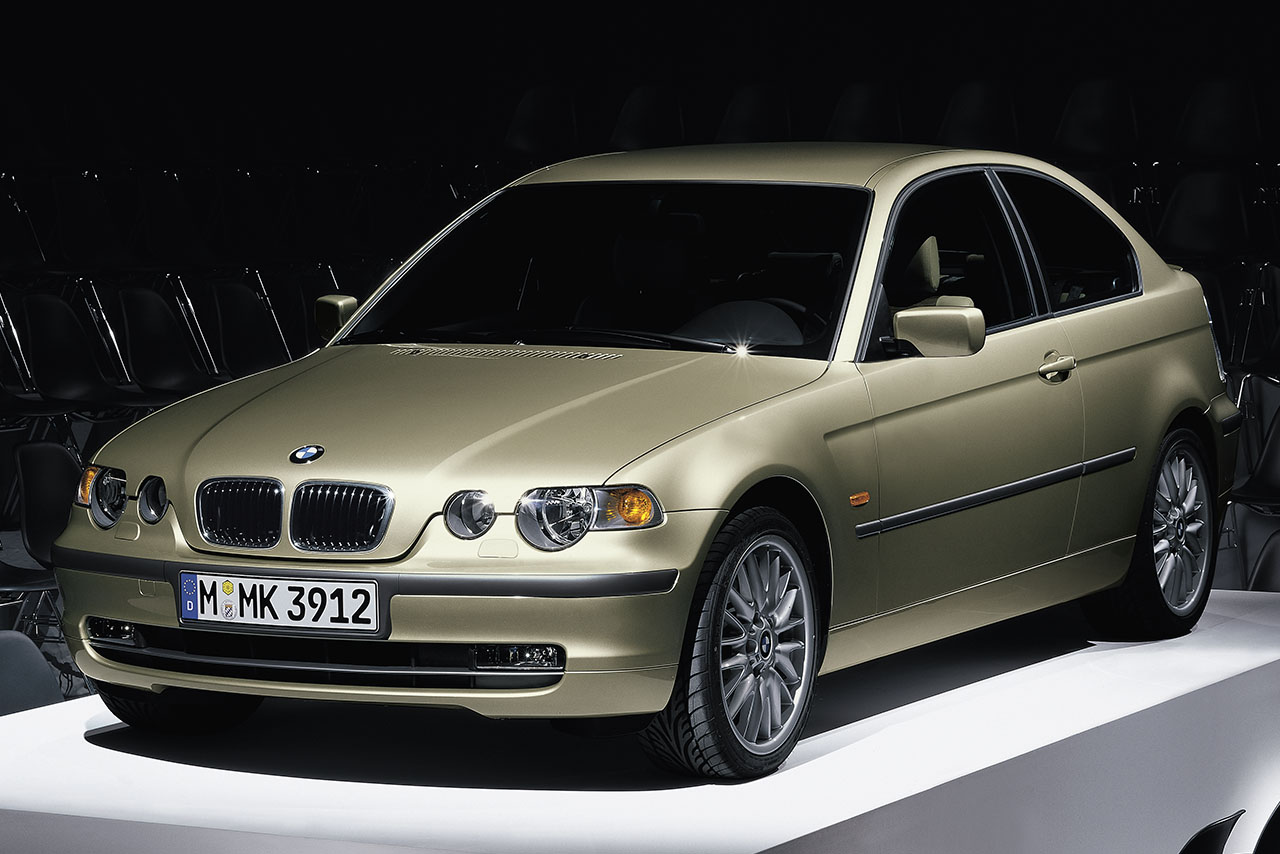
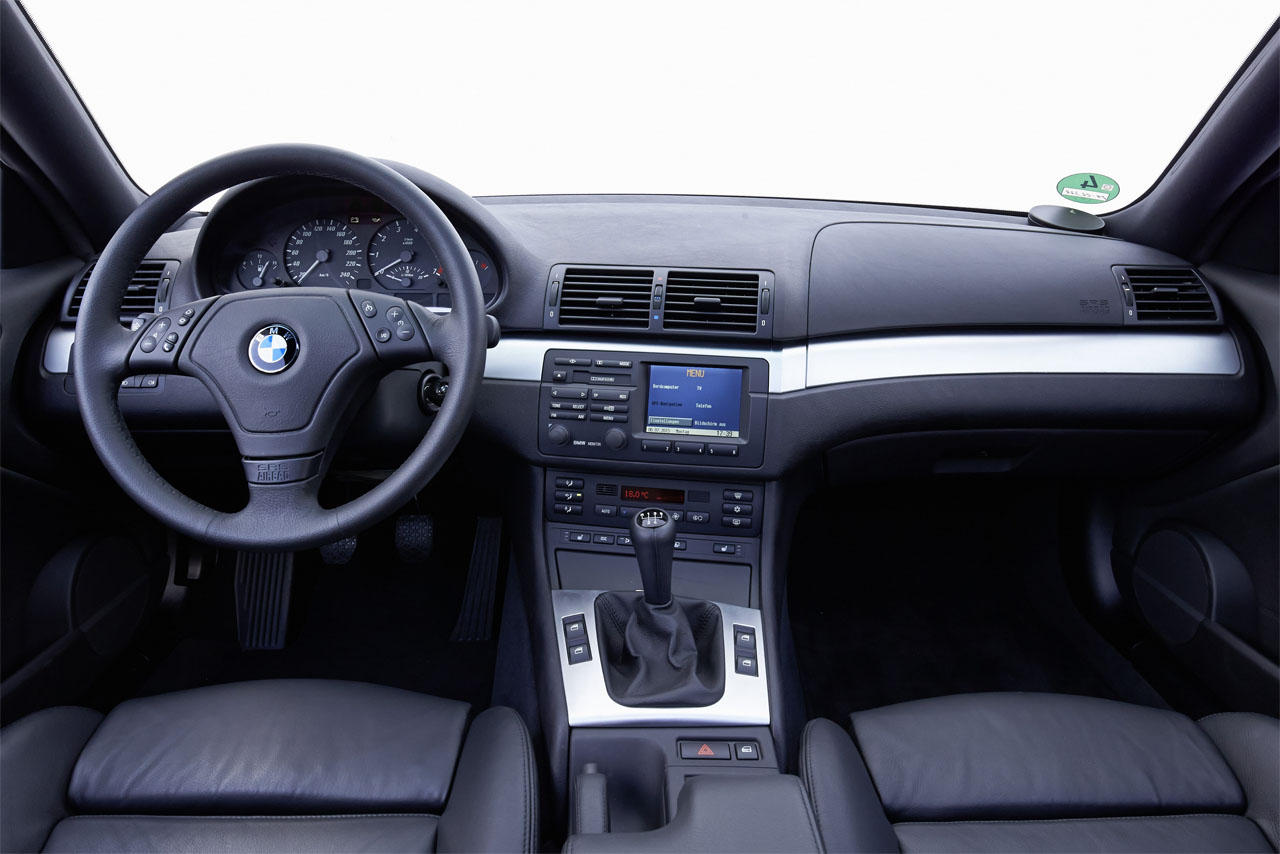
Technology that sets standards – and records.
Driving dynamics and safety were further enhanced by the lightweight chassis consisting of about 20 percent aluminium in terms of weight, plus high-strength steel and Dynamic Stability Control (DSC) – which was now available for all models. ASC+T remained standard, and from 2000 onwards, the Sedan and Touring could be fitted with the BMW all-wheel drive.
All these advances clearly paid off: at the end of 1999 the BMW 3 Series ranked third among new registrations in Germany – an unprecedented achievement in this market segment. By 2006 BMW had made 3,266,885 3 Series vehicles – a record to this day and a testament to the successful interplay between design, technology and the many variant options.
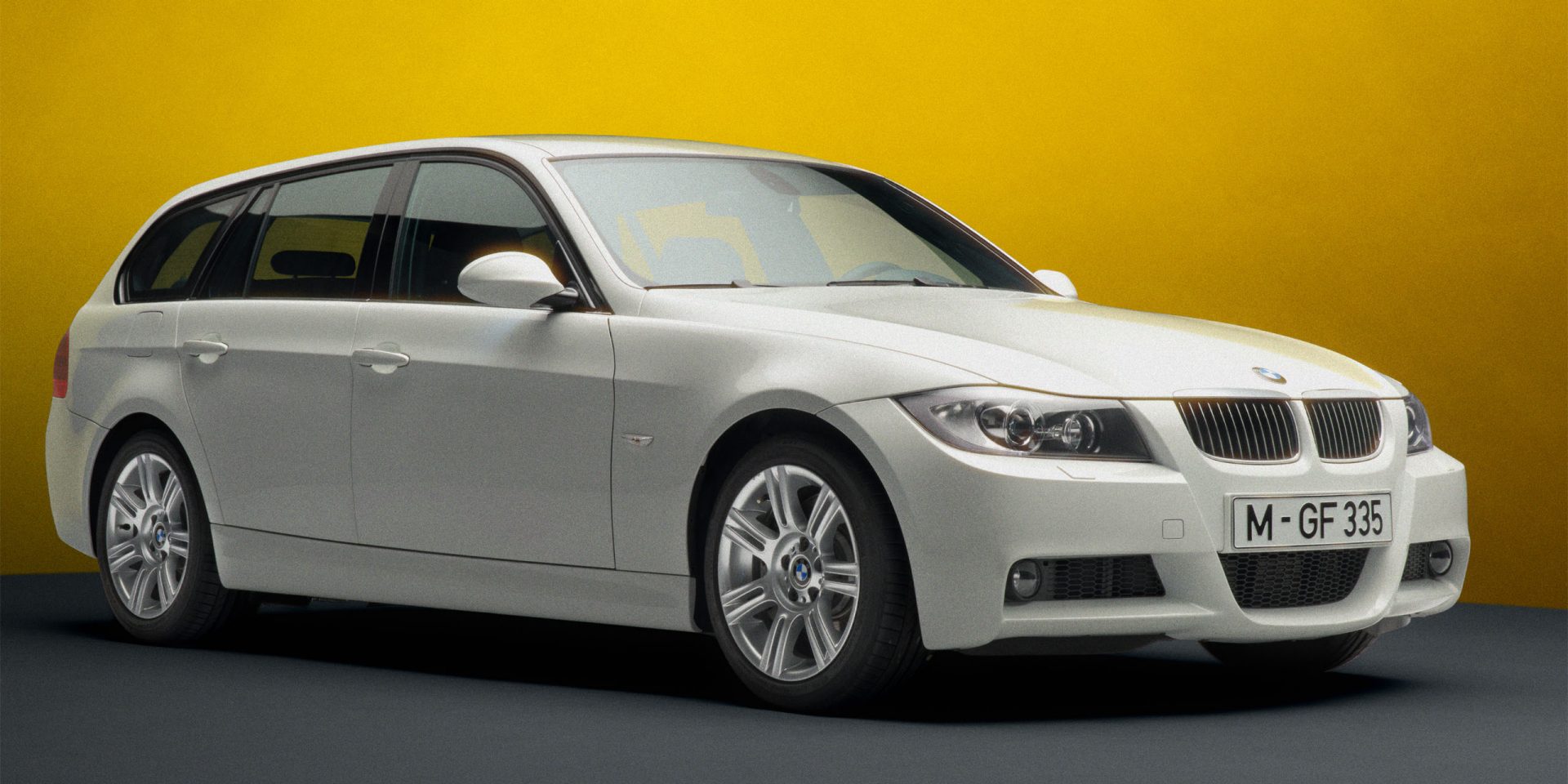
In 2005 the fifth generation of the BMW 3 Series was unveiled at the Geneva Motor Show – initially as the four-door Sedan. Its powerful design with short overhangs and dynamic lines gave it an unmistakable character. Bigger than its predecessor, it offered more comfort and safety, being 49 mm longer, 78 mm wider and 10 mm higher. But thanks to lightweight engineering, it was no any heavier. Its efficient engines, agile handling and modern equipment won over customers worldwide, and in 2006 it was awarded the title of World Car of the Year in New York.
Hot on the heels of the Sedan came the new BMW 3 Series Touring, which was now 42 mm longer, 78 mm wider and 9 mm taller. Comfort, luggage capacity and handling all benefited. The wheelbase, which had grown by 35 mm, offered enhanced driving comfort and dynamics while reducing vibrations. In 2006 came the Coupe, with its stretched, sporty lines and more spacious interior. In 2007 the new Convertible featured a retractable hardtop, which made for a quieter ride at higher speeds. Thanks to the low waistline, open-topped driving remained a real experience. In 2007 the new BMW M3 Coupe made its debut, featuring a V8-Power engine (309 kW/420 hp) for the very first time. The year after, the Convertible and Sedan versions of the high-performance M3 followed.
From 2007 the Coupe, Convertible and Sedan joined the M3 lineup – featuring a V8 engine for the very first time.
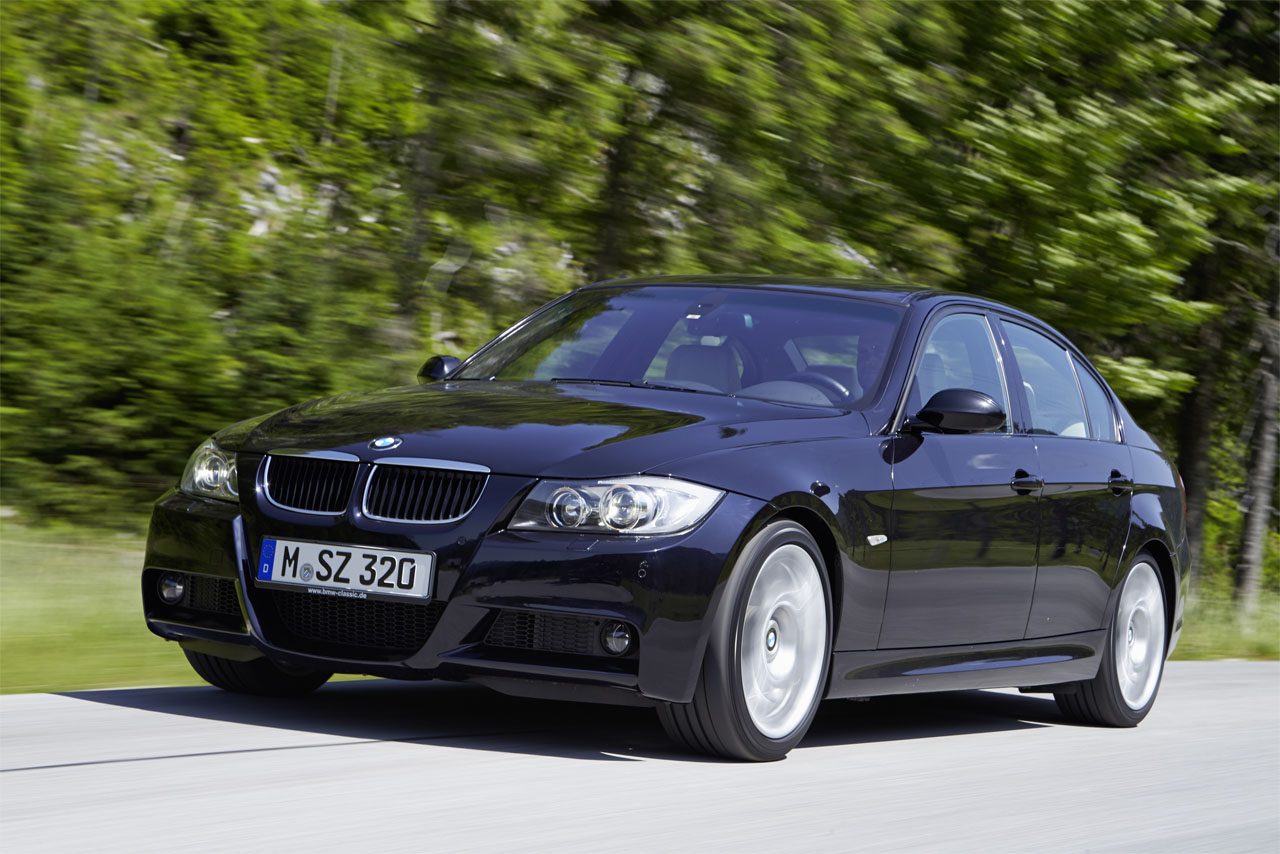
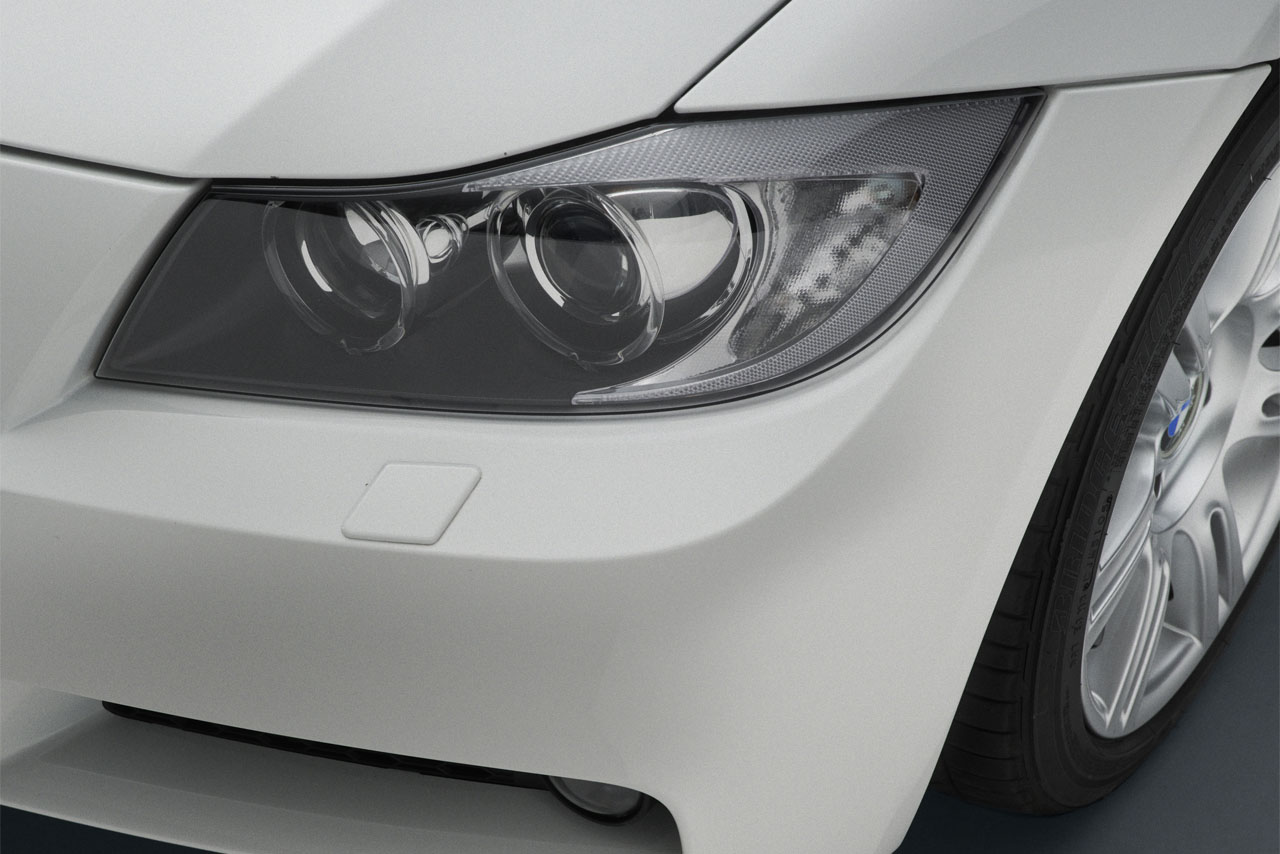
Efficent and emotional: the e90 does both.
Designed to boost efficiency as well as driving pleasure, BMW EfficientDynamics became the defining feature of the engine range. Thanks to its many innovations, the 320d four-cylinder diesel, for example, now delivered 120 kW/163 hp and 340 Nm. Meanwhile, the petrol units were equipped with that latest VALVETRONIC throttle-free load control. The 325i and 330i six-cylinder petrol engines incorporated magnesium-aluminium-composite crankcases – and were the first volume-produced engines to do so. In the Coupe, the 335i inline six-cylinder with Twin Turbo technology (225 kW/306 hp) was redefining driving dynamics. But the top performer among diesels was the 335d delivering 210 kW/286 hp and 580 Nm.
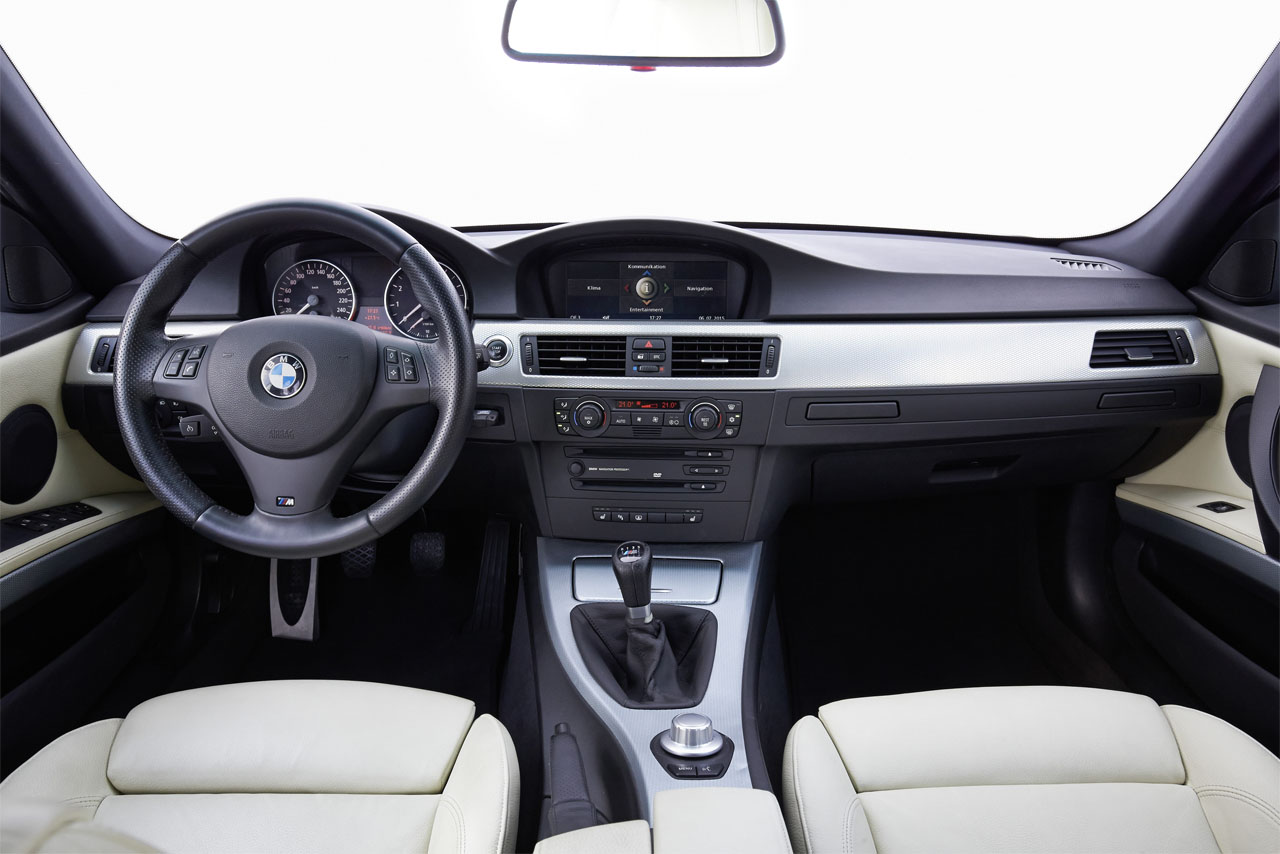
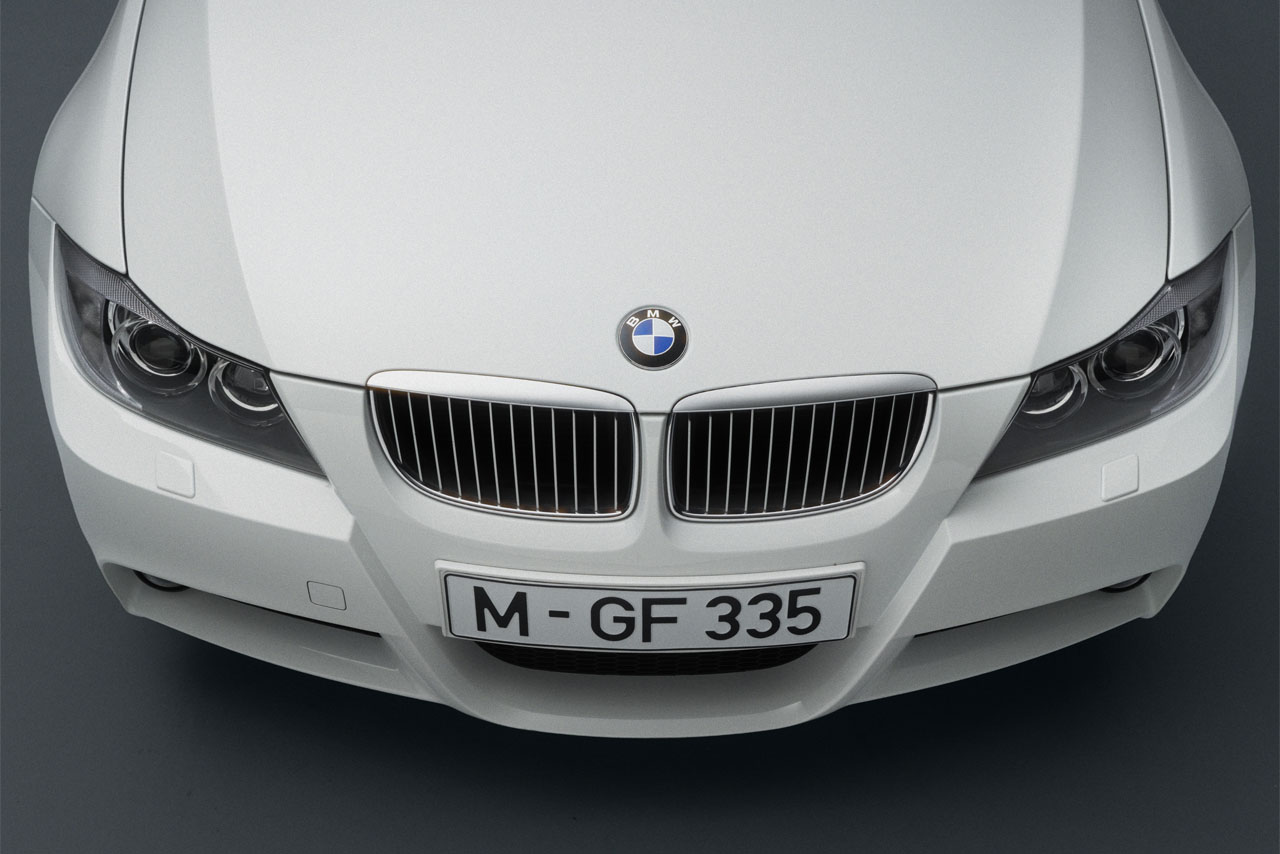
Leading-edge technology – over 1.3 million times.
Efficiency-enhancing technologies such as Brake Energy Regeneration, Auto Start-Stop and the Optimum Gearshift Indicator saved fuel and emissions. Meanwhile, the chassis now featured an aluminium double-joint sprint-strut front axle and an all-new multilink rear axle for more agility and enhanced driving pleasure. The DSC incorporated additional functions such as the special Dynamic Traction Control (DTC) mode and Cornering Brake Control (CBC).
With more than 3.1 million units sold, the fifth generation all but matched its predecessor’s record and remains a global bestseller.
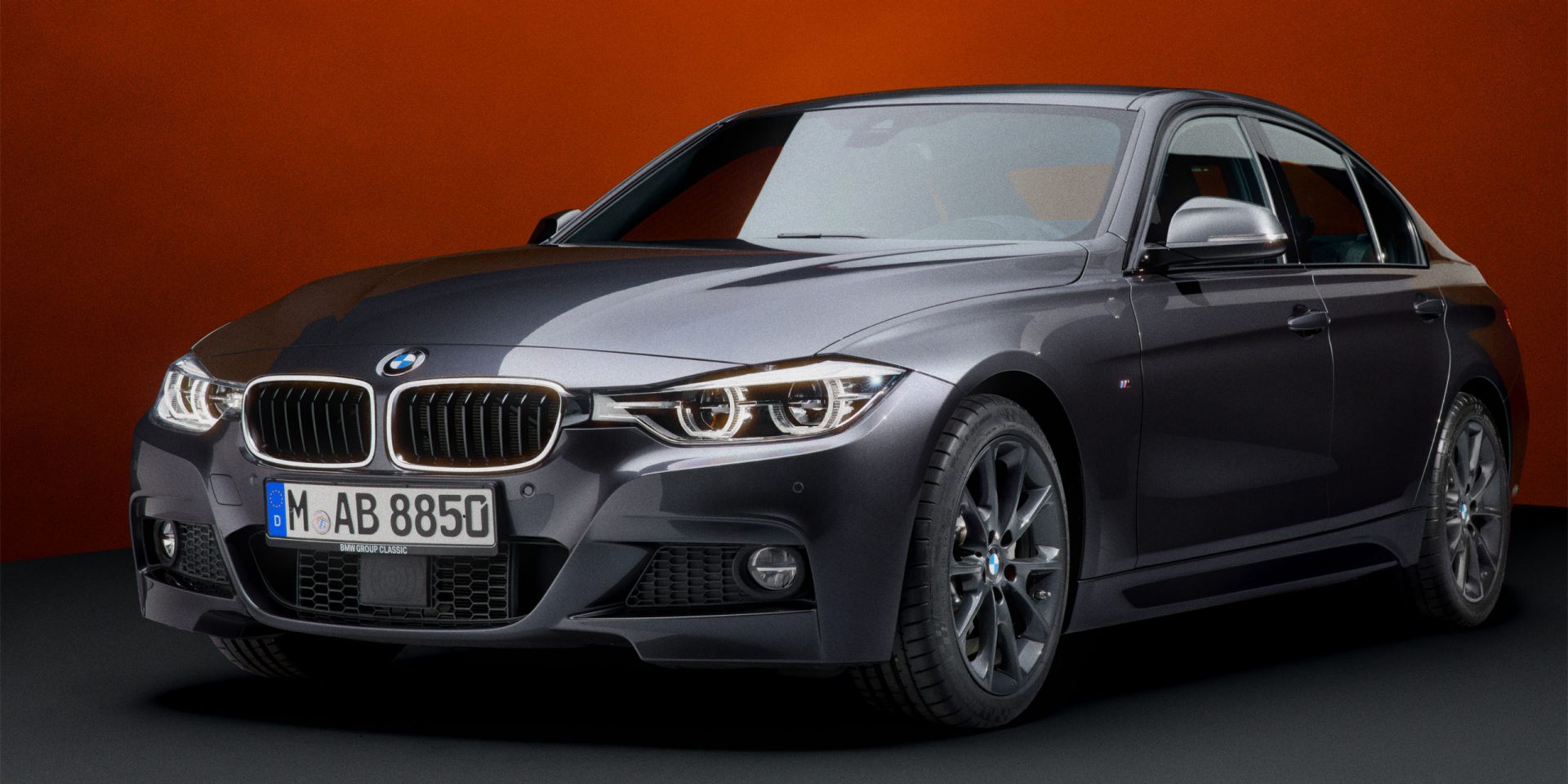
2012 saw the launch of generation six. Longer and wider – but about 40 kg lighter thanks to its smart, lightweight components – the newcomer had a wheelbase that had grown by 50 mm as well as a 37-mm wider track at the front and a 47-mm wider track at the back. Its flat headlights extended right up to the kidney grille, with a sharper and more agile look. Driving Experience Control and air conditioning came as standard, while the optional eight-speed Steptronic transmission and full Head-Up Display were the first in the segment. Convenient features such as Real-Time Traffic Information, hands-free tailgate operation, Active Protection and intelligent emergency call sent the mid-size segment speeding into the future.
Now in its sixth generation, the BMW 3 Series family was outgrowing itself. As well as entering new segments, it came to comprise two separate model series for the very first time. The Sedan remained the centrepiece, sporty and stylish with significantly more space in the rear, while the Touring combined driving pleasure and practicality, thanks to its electric tailgate and up to 1,500 litres of luggage capacity. The lineup was joined by the 3 Series Gran Turismo, which broke with conventions by combining elegant proportions with an elevated seating position, coupe-style roofline, frameless doors and up to 1,600 litres of space for variable use.

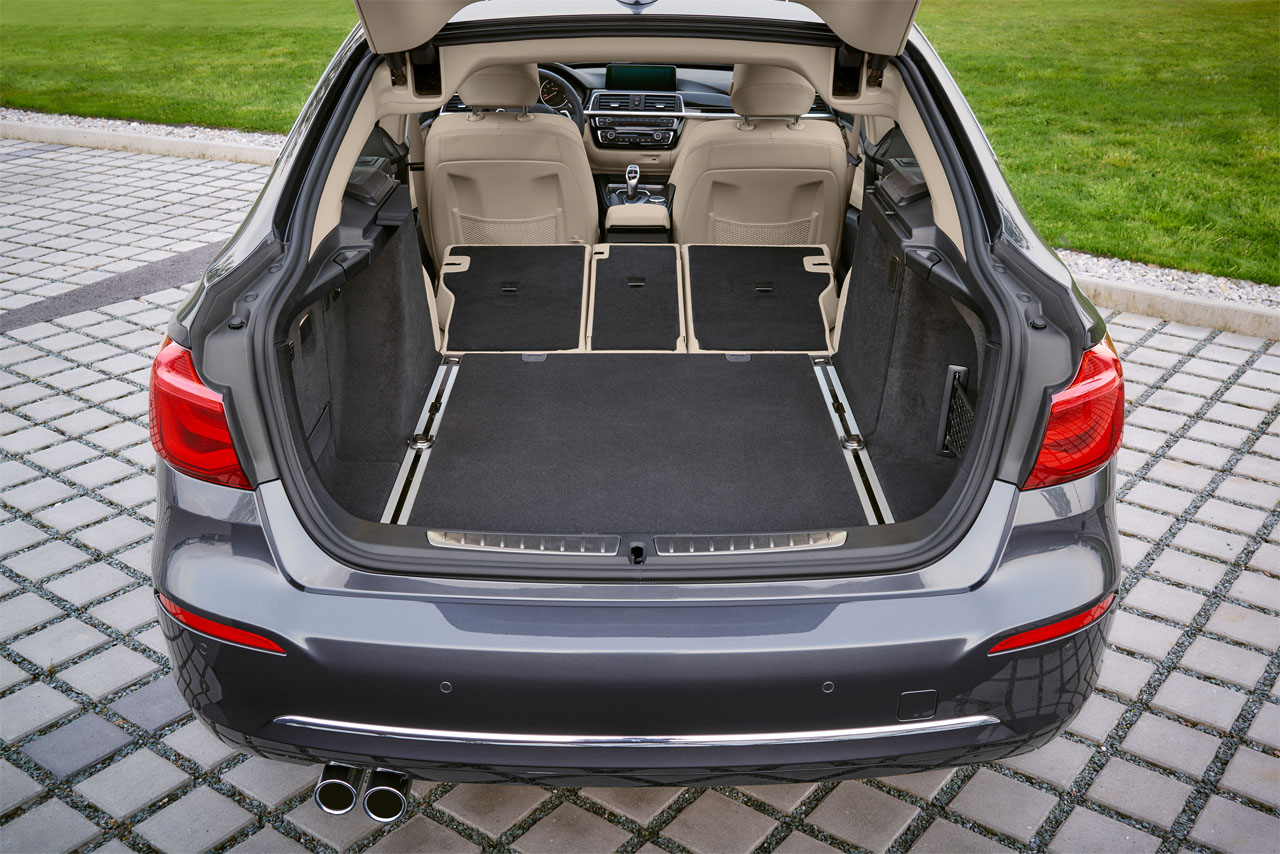
New series, same heart: twinpower turbo.
In the meantime, BMW established the 4 Series – a series of its own characterised by particularly sporty designs. In 2013 the new series welcomed the flatter, broader Coupe, followed one year later by the Convertible (with retractable hardtop) and the Gran Coupe, which combined the elegance of a four-door with a high degree of everyday practicality.
By this point, all of the combustion engines featured TwinPower Turbo technology. At launch, the sixth-generation BMW 3 Series Sedan was available with a choice of a four-cylinder and a inline six-cylinder petrol engine and a four-cylinder diesel. Also available was the extremely economical 320d EfficientDynamics Edition (4.1 l/100 km). 2012 saw the launch of the first hybrid model with system performance of 250 kW/340 hp. By the end of this generation, customers could choose between five petrol and seven diesel units delivering 85–240 kW/116–326 hp. Seven of the variants were also available with the intelligent all-wheel drive system BMW xDrive – the 4 Series Convertible among them for the first time. Since 2014 the M3 Sedan has been the only high-performance 3 Series, as the Coupe and Convertible now carry the M4 name. All of them a powered by a high-speed 3.0-litre inline six-cylinder engine delivering 317 kW/431 hp.
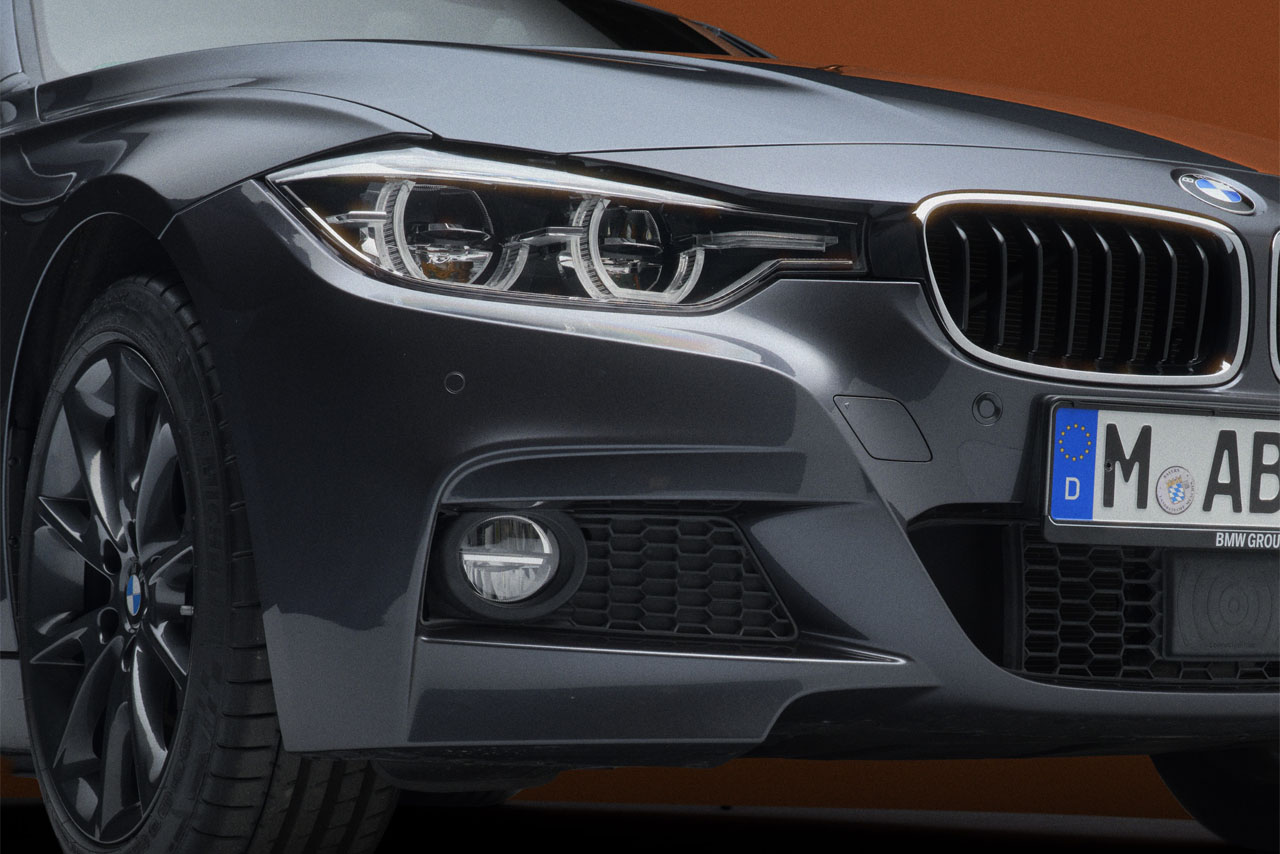
Fine tuning, broad stance, abundant driving pleasure.
The new chassis technology underscored the vehicles’ dynamic credentials: an upgraded double-link spring strut axle at the front, an optimised multi-link axle at the rear and balanced 50:50 weight distribution ensured precise, agile handling. Power-assisted steering also enhanced the driving experience and could be complemented with the optional Variable Sports Steering and adaptive damping.
With its extensive model range, high-tech cockpit and EfficientDynamics, the sixth-generation BMW 3 Series was a master of versatility – and enthusiastically welcomed by over 2 million drivers.
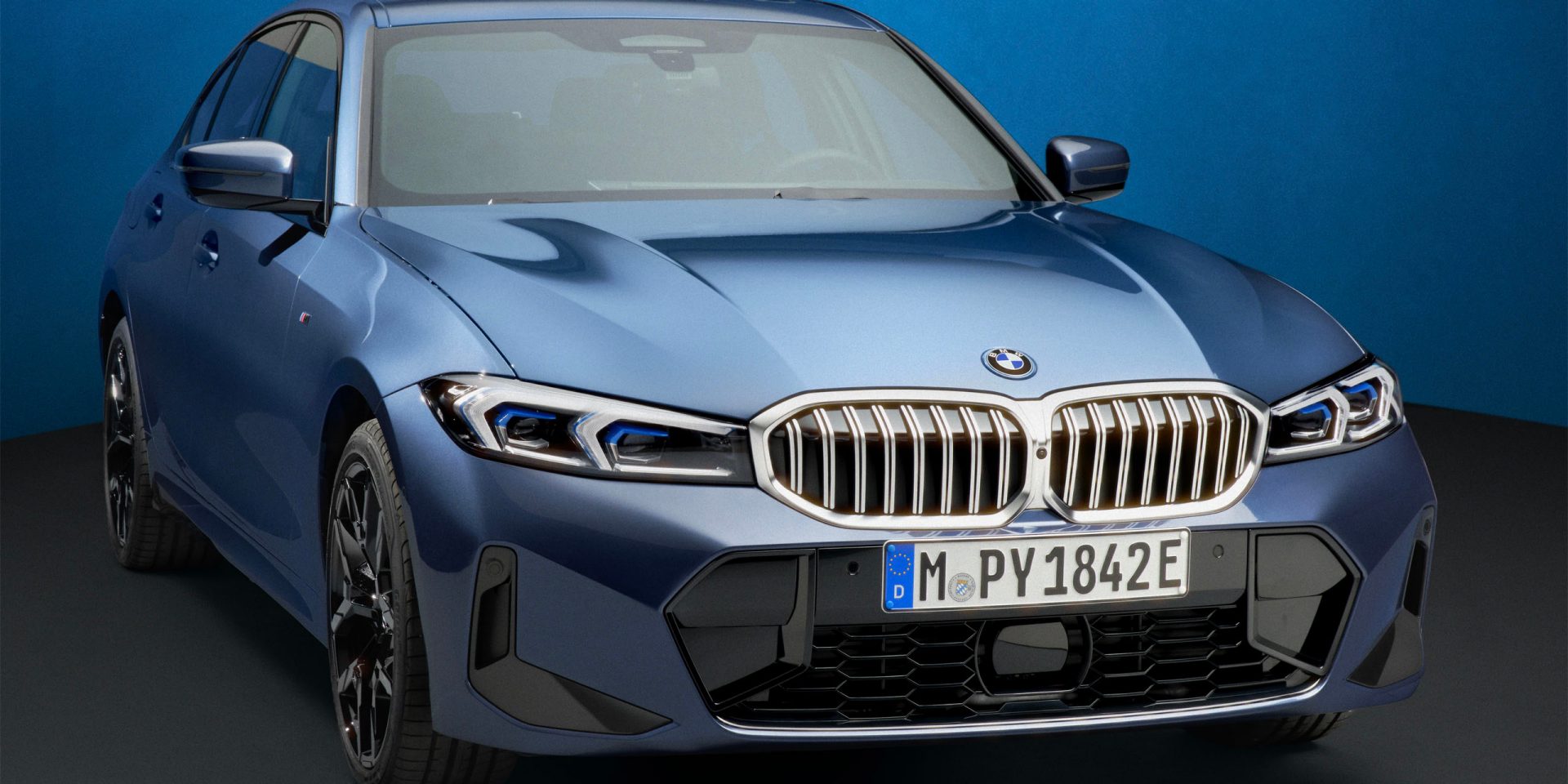
It’s the Mondial de l’Automobile in Paris in October 2018 and the curtain is raised for the latest BMW 3 Series. The Sedan finally hit the road in the spring of 2019. At 76 mm longer, 16 mm wider and with a 41 mm longer wheelbase than its predecessor, its aerodynamics have noticeably improved. And with an impressive drag coefficient of 0.23 – enabled by active air flap control and an almost completely panelled underbody – it is more streamlined than ever. And then there’s the long bonnet, short overhangs and flowing roofline: aerodynamics made visible.
Inside, there’s more space and the optional fully digital, high-resolution cockpit. This includes the Live Cockpit Professional, which brought the BMW Operating System 7.0 to the 3 Series. The Intelligent Personal Assistant – activated by saying the words “Hey BMW” – offers an on-board concierge service, plans routes and adjusts the air conditioning and driving modes. In 2022 the BMW Curved Display made its way into the 3 Series, followed by the enhanced BMW Operating System 8.5 in 2023. The new iDrive operating and display system with QuickSelect are controlled by touch or via the BMW Intelligent Personal Assistant, using natural language.
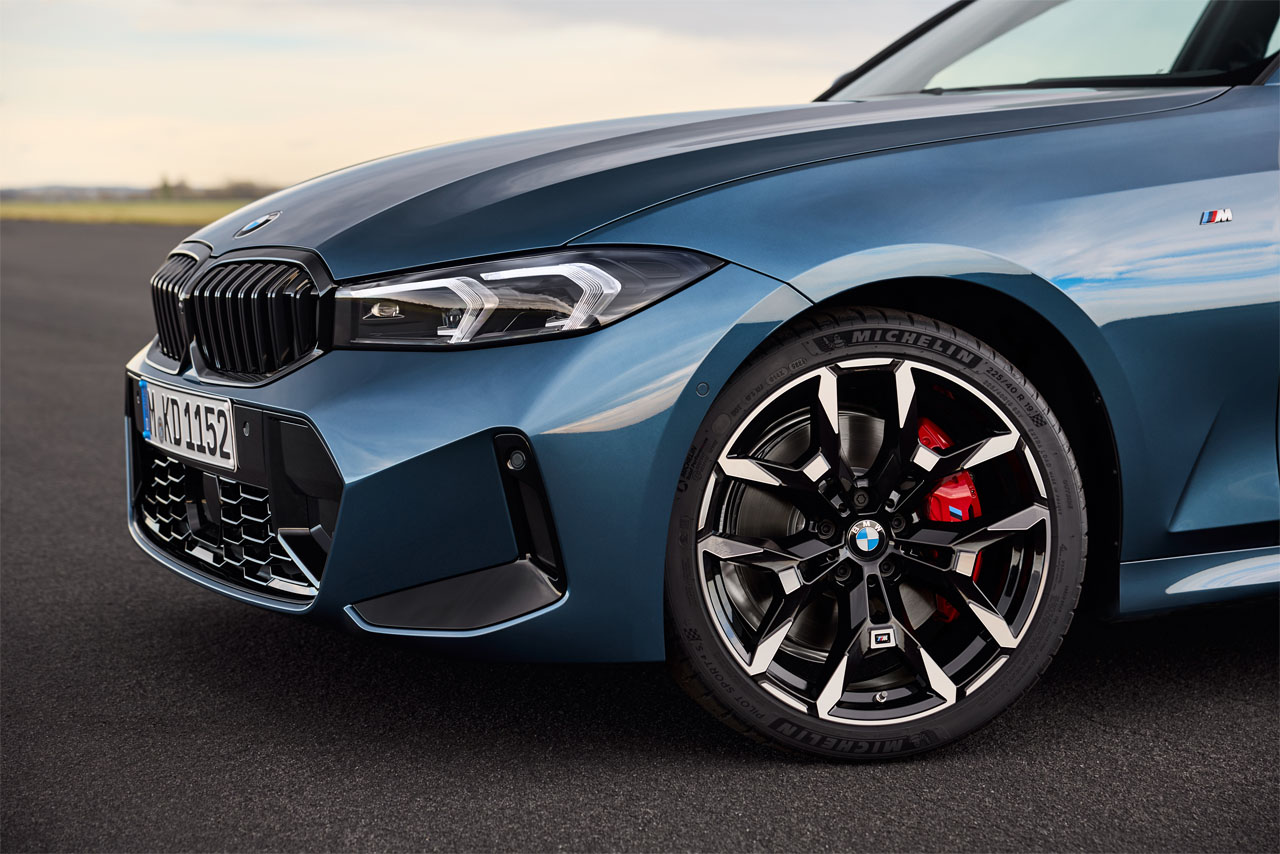
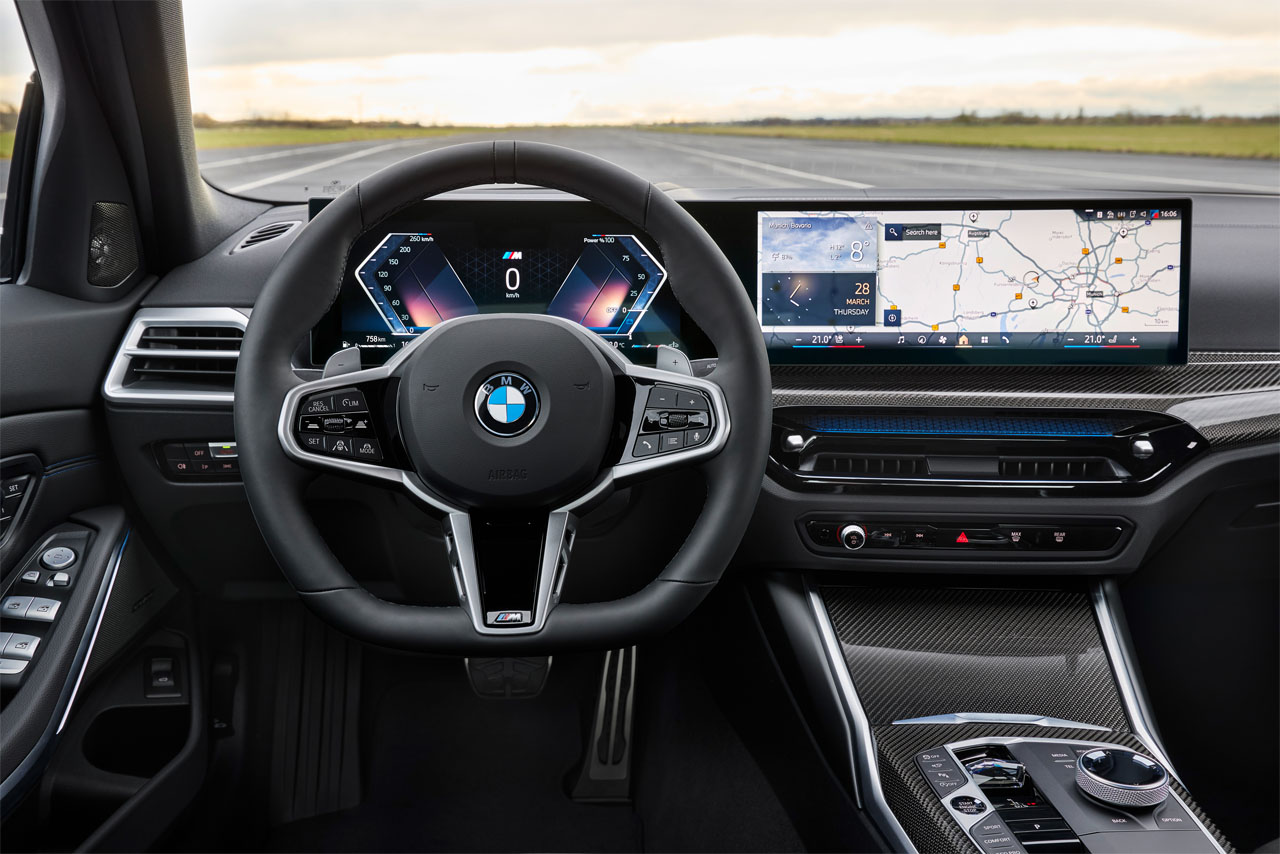
When support from tech gets hearts racing.
More assistance systems mean more support: the new Collision and Pedestrian Warning systems come as standard and can be complemented with the optional Driving Assistant Professional, which includes the Lane Keeping Assistant with Active Side Collision Protection. The Park Assist accelerates, brakes and changes gear to manoeuvre the car into or out of a parking space. And to back out of a tight spot, the Reversing Assistant retraces the car’s route exactly for up 50 metres – backwards.
In terms of the chassis, the latest BMW 3 Series incorporates all-new stroke-dependent dampers. The body structure and suspension mountings are now far more rigid, and the car is up to 55 kg lighter. The low centre of gravity, 50:50 weight distribution and additional track width represent a honing of the 3 Series’s DNA.
At launch, the seventh generation was available with a choice of two petrol and three diesel engines delivering 110–195 kW, 150–265 hp. Later the plug-in hybrid 330e was introduced (with up to 101 km of electric range since 2024) along with the BMW M340i xDrive (275 kW/374 hp). Today the 3 Series portfolio encompasses four petrol and four diesel engines. All the diesels and the big inline six-cylinder petrol unit feature 48-V mild hybrid technology, and many variants are available with xDrive – the 4 Series Convertible among them for the first time. In June 2019 the 3 Series Touring was launched, with up to 1,510 l of luggage capacity, a wide-opening tailgate and full LED lighting as standard. In 2020 the 4 Series entered its second generation, with the Coupe, Convertible and Gran Coupe more distinct than ever before. The same year saw the unveiling of the M3 Sedan and M4 Coupe (353 kW/480 hp, optional 375 kW/510 hp in the Competition version, and for the first time with M xDrive). The family was completed in 2022 with the arrival of the first M3 Touring.
Updated on the outside,
upgraded on the inside – the passion continues.
Also in 2022, the BMW 3 Series received a facelift, with a crisper design, smarter digitalisation and optimisations to the chassis. On the outside, the slimmer LED eyes, powerful kidney grille and redesigned aprons are striking. On the inside, ever-increasing digitalisation is affirmed by the Curved Display, and overhauled steering wheel options offer enhanced comfort and control. BMW Maps now comes as standard, with Augmented View and the Head-Up Display adding to the list of state-of-the-art equipment as options. Thanks to its new 19.5 kWh battery, the 330e now offers three-phase charging at up to 11 kW and can be fully replenished from zero in 2:15 hours. The new suspension setup with stiffer dampers on the rear axle offers noticeably more comfort – without compromising dynamics.
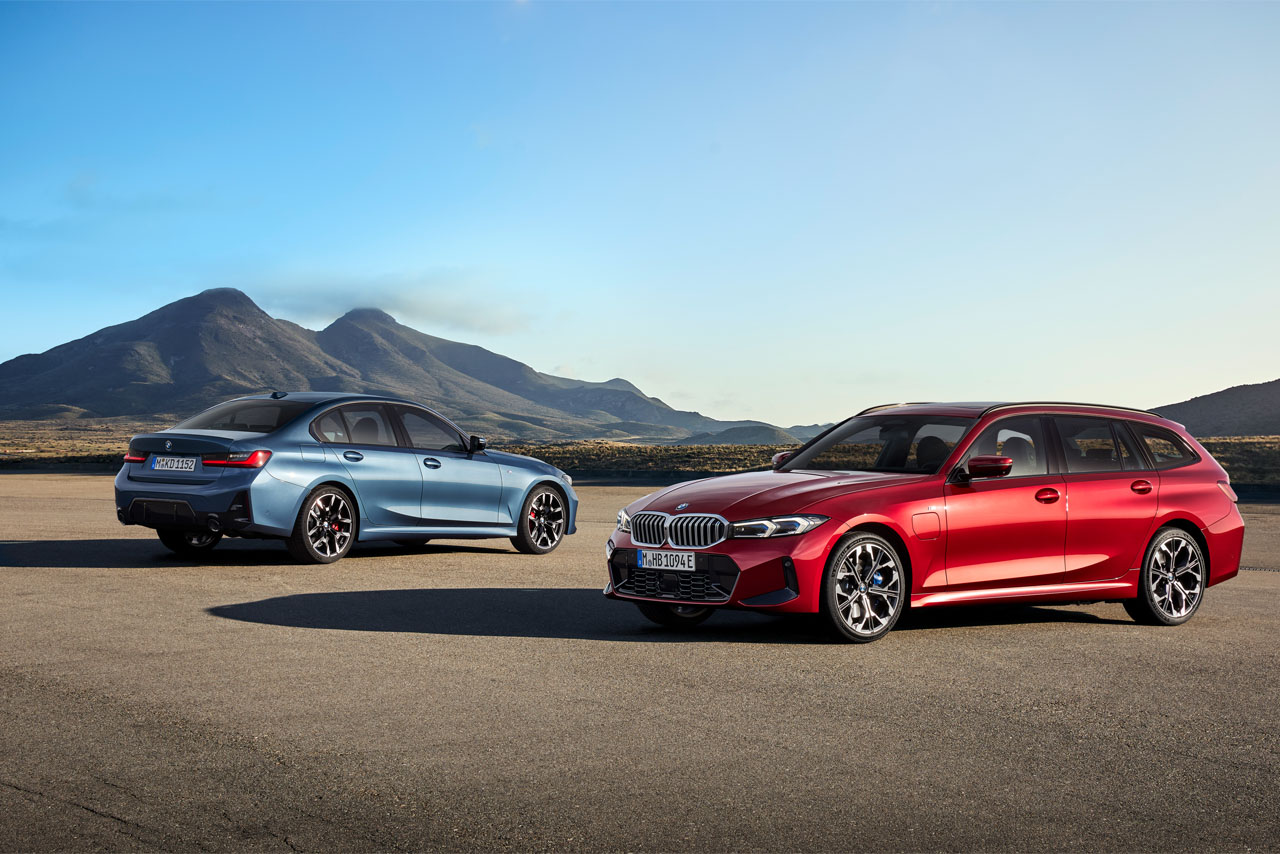
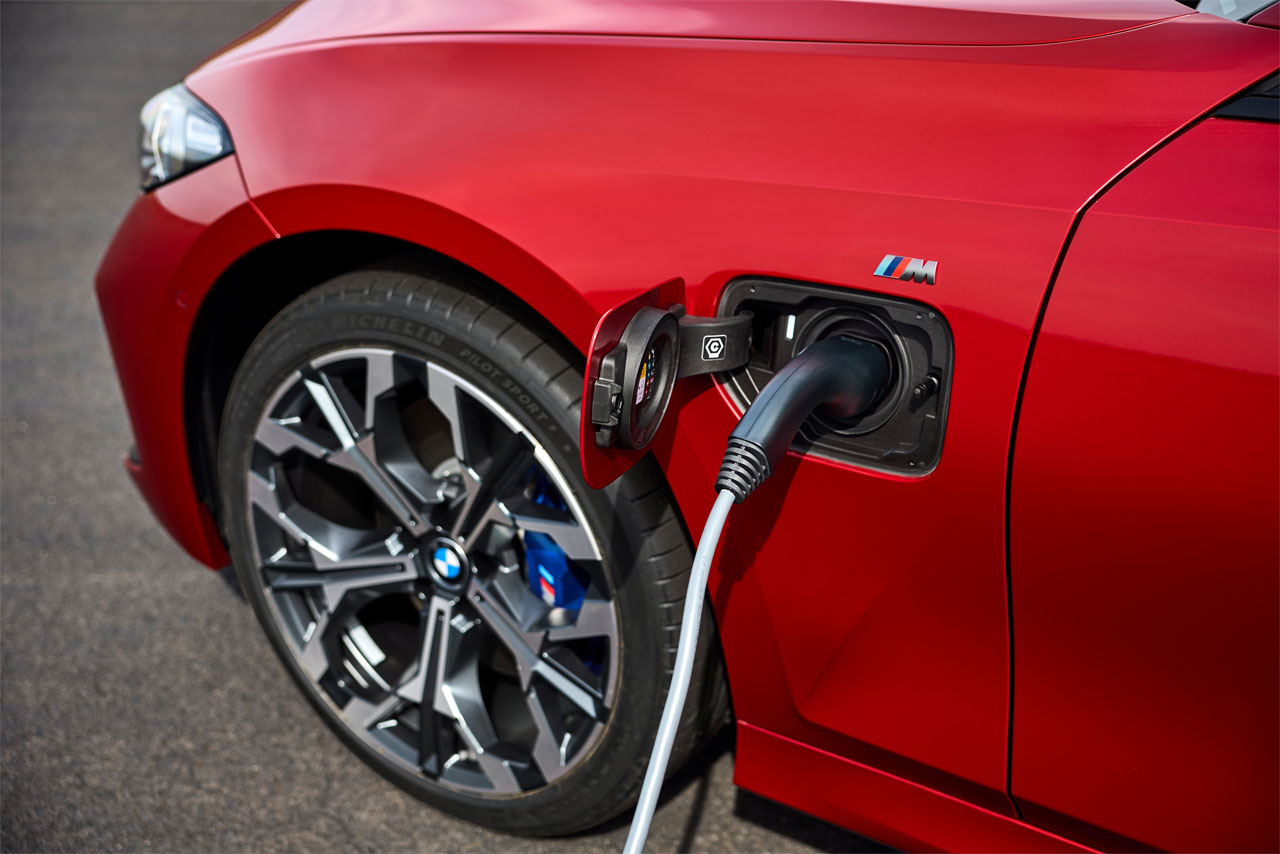
The current BMW 3 Series marks the next stage in the evolution of the 3 Series and continues the 50-year success story – with its crisp design, smart digitalisation, wide range of drives and noticeably enhanced handling. Always cutting-edge. Forever setting the bar higher.








